





















































































































































SURVEY
Even with prices rising and an ongoing labour shortage, local stakeholders say Whistler’s customer service ratings haven’t faltered. 15 STAY
With Whistler’s shallow, weak snowpack, Avalanche Canada recommends practising “avoidance and patience” in the backcountry for now. 16 THANKS, DOC Whistler’s Dr. Karin Kausky reflects on being named a 2022 Family Physician of the Year by the College of Family Physicians of Canada and Foundation for Advancing Family Medicine.


Combining science with Indigenous knowledge, the Canadian Mountain Assessment will change how we understand our mountains. - By Brandon Barrett COVER So many great things can come through working together, free of ego and hubris. - By Jon Parris // @jon.parris.art

















































































Founding Publishers KATHY & BOB BARNETT
Publisher SARAH STROTHER - sstrother@wplpmedia.com
Editor BRADEN DUPUIS - bdupuis@piquenewsmagazine.com
Sales Manager SUSAN HUTCHINSON - shutchinson@wplpmedia.com
Production Manager AMIR SHAHRESTANI - ashahrestani@wplpmedia.com
Art Director JON PARRIS - jparris@wplpmedia.com
TESSA SWEENEY - tsweeney@wplpmedia.com
GEORGIA BUTLER - gbutler@wplpmedia.com
Digital/Sales Coordinator AMELA DIZDARIC - traffic@wplpmedia.com
Production production@piquenewsmagazine.com
Features Editor BRANDON BARRETT - bbarrett@piquenewsmagazine.com
Arts Editor ALYSSA NOEL - arts@piquenewsmagazine.com
Social Media Editor MEGAN LALONDE - mlalonde@piquenewsmagazine.com
BRANDON BARRETT - bbarrett@piquenewsmagazine.com
MEGAN LALONDE - mlalonde@piquenewsmagazine.com
ALYSSA NOEL arts@piquenewsmagazine.com
ROBERT WISLA - rwisla@piquenewsmagazine.com
DAVID SONG - dsong@piquenewsmagazine.com

Classifieds and Reception mail@piquenewsmagazine.com
Office and Accounts Manager HEIDI RODE - hrode@wplpmedia.com
Contributors G.D. MAXWELL, GLENDA BARTOSH, FEET BANKS, LESLIE ANTHONY, ANDREW MITCHELL, ALISON TAYLOR, VINCE SHULEY, LISA RICHARDSON
President, Whistler Publishing LP


SARAH STROTHER - sstrother@wplpmedia.com
ISSN #1206-2022




















AS CHRISTMAS DRAWS near, close to 2 million Canadians are reportedly facing a notso-nice gift from the federal government in the form of Canada Emergency Response Benefit (CERB) clawbacks.
According to the feds, about 1.8 million Canadians received debt notices related to CERB payments they didn’t qualify for (of an estimated 9 million Canadians in total to receive the COVID benefit).
At a minimum of $2,000 per recipient (a
BY BRADEN DUPUISconservative estimate), that’s about $3.6 billion in payments sent to people who didn’t qualify.
Randy Helsdon, a glass worker from London, Ont., is among those who received the debt notices.

All the information he received at the time was that the money came without strings attached to help people through the pandemic, Helsdon recently told CBC News.
“If we were told we’d have to pay it back, I would have just sent it back to them immediately,” he said, adding that the debt notices told him he would have to pay back $2,000, and could do so in instalments of $200.
“With the cost of groceries and everything, I don’t have an extra $200 a month right now,” he said.
“All I’m asking is to continue to let us try to tread water instead of pushing us under. I’m hoping they just go back and cancel the repayments.”

Let’s be clear: $3.6 billion is a whole lot of money. But it pales in comparison to the full scope of Canada’s pandemic misspending.
A recent Auditor General’s report found a “minimum” of $27.4 billion in COVID payments went to those who were ineligible or actively scamming the system. Tack on $4.6 billion in confirmed government overpayments, and you’re looking at more than $32 billion in
misappropriated funding.
As journalist Tristan Hopper pointed out in a Dec. 8 National Post article, for context, that is about one tenth of the $325-billion deficit Canada racked up in 2020 (and for a bit more context in the other direction, I had a small panic attack about a $140 fraudulent charge on my credit card this week).
So in the grand scheme of Canadian debt, $32 billion does not seem like much. But as Hopper points out, it actually constitutes the “largest misappropriation of government funds in the history of Confederation.”
Some of the things you could do with $32 billion, as listed by Hopper: build the Canadian Pacific Railway 18 times over; pay for an entire month of Canadian health-care; or buy every pipeline Alberta’s ever dreamt of.
In Whistler, it could also buy you Whistler Blackcomb—purchased by Vail Resorts in


According to James Brander, a professor at UBC’s Sauder School of Business, Canada’s monumental COVID spending is a key factor in the inflation we’re now witnessing.
“Canada was very generous, and it had benefits, but it had costs as well,” Brander said.

In creating its COVID relief programs, the federal government and the Bank of Canada essentially “printed money” to send to beleaguered individuals and businesses to keep them afloat.
“So what happened was that we sent out all this money, but it didn’t correspond to increased production, so we basically had more dollars, more liquidity, chasing fewer goods, because we were working less, and that does create inflationary pressure,” Brander said.
“We’re paying for [that generosity] now. When you finance government activity by printing money, you end up causing inflation,
And therein lies the tradeoff. Racking up legendary debt and driving inflation through the roof is obviously not good for anyone. But neither is allowing Canadians and their businesses to fail because we’re too sluggish offering relief due to fears of misspending or fraud.
Which begs the question: which hand would you rather have on the wheel?
“The Canadian government, I think, was the most generous, probably, of all the governments, and as a result, people, from an economic point of view, suffered less,” Brander said.

“So it is a tradeoff. But we are paying the price now.”


Where do we stand at the end of 2022? Canada’s debt-to-GDP ratio has gone from about 40 per cent pre-pandemic to 75 per cent today, “and that is uncomfortably high,”
2016 for $1.4 billion, which would be about $1.7 billion today—18 times over.
Or it could buy you every single assessed property in Whistler (total assessed roll in 2022 of $24.7 billion) while still leaving you about $7 billion in change.
Put another way, the federal government’s COVID misspending alone could buy you literally everything in Whistler, and you’d still have several billion in your bank account to fall back on.
So the scale of the spending (and misspending) is truly awesome. Its implications are not.
and economists call that the inflation tax.”
There are of course critics who say Canada’s COVID bailouts were too generous, its dispersal of cash too flippant, and “that’s a reasonable point of view,” Brander said.
“But when you’re turning out money that quickly, trying to get it to people today … all kinds of money slips through the cracks, there is a fair amount of fraud, a fair amount of unintentional overpayments and so on, so of course that happens. It’s impossible for that not to happen when you have this crash program of sending out money.” Hence the current clawbacks.
Brander points out.
“Canada had the capacity, basically, to get through a crisis, because its debt-to-GDP ratio was fairly low, by the standards of most other countries,” he said. “It’s now fairly high. We don’t have room for another crisis.”
Ultimately, Canadians will decide if the COVID misspending is unforgivable; the Liberals no longer fit to manage the public purse.
“In either case, we’re not in a catastrophic situation right now, but we’ve used up all our breathing space,” Brander said. “And it is time to get serious again about getting the fiscal house in order.” ■
“[W]e’re not in a catastrophic situation right now, but we’ve used up all our breathing space, and it is time to get serious again about getting the fiscal house in order.”
- JAMES BRANDER






This letter was sent to Whistler’s mayor and council, and shared with Pique.
I do not agree with the increase in taxes. A rolling, five-year, cost-of-living average makes sense, not hitting Whistler property holders based on the one-off jump in inflation. The BC Assessment office is saying that most owners can expect to a five- to- 15-per-cent rise in values when notices are issued Jan. 3.
The Resort Municipality of Whistler is looking at double dipping. Increasing taxes by 8.31 per cent based on last year’s property assessments does not factor in the expected increase in property values. Reality is the increase will be more than 8.31 per cent. Unless my math is wrong, which it certainly could be.







Taxpayers are going to get slammed next year with a recession and economic downturn.
Groceries are up significantly and expected to rise another eight per cent. In fact, a study estimates that a Canadian family of four will spend $1,065.60 more on groceries in 2023.


Sadly, the RMOW should be cutting expenses and taking a proactive stance before this recession. Increasing our taxes will hurt our families.
As an example, do we really need to spend $165,000 on the disc golf course now? Sure, it’s a great thing to have, but now? How about spending that $165,000 on food for the Whistler Community Services Society?



Mayor and council’s departmental budget leaps from $448,000 to $625,000—a $177,000, or 40-per-cent year-over-year increase. How do you justify this kind of increase at this time?


What’s with all the consultants and professional services? Hundreds of thousands spent on them. We seem to have some pretty













smart people working at the muni now. Do we have to outsource?
What is a Village Stroll Tree inventory, and why does it cost $40,000?
Replacement of three wildfire danger rating signs for $20,000. The ones we have work fine now.
The plethora of spending goes on and on. Council should go through each line item and review what is necessary and what is not. There are items that can wait. Just like the promised Valley Trail extension from Highway
99/Alta Lake Road to Millar Creek that has been delayed.
A recent poll by the Angus Reid Institute says more than half of Canadians—56 per cent— say they will be spending less on Christmas, including presents and entertaining. This is the first time the non-profit’s data has shown that more than 50 per cent of Canadians say they are financially worse off this year than this time last year.





Canadians are cutting back on expenditures. You want to spend more and tax us more. It’s time for the RMOW to cut back like the rest of us during this recessionary period and delay nonessential items.
Patrick Smyth // Whistler






The truth about a municipality’s vision is found in its budget.
The true vision for Whistler appears to be one of missed climate targets, and business as usual.

I sincerely hope that this new council will eventually rise to the challenge of ensuring that our community meets our greenhouse gas emission targets, something they have kicked the can on in this first budget.
Don’t be fooled by the headline-grabbing Resort Municipality of Whistler (RMOW) estimate that $27 million will be spent on projects to help the municipality achieve its climate goals. Climate deniers will be relieved to learn that the bulk of that

dollar amount is going to be spent on water works, and the list of projects includes $495,000 on file digitization, $310,000 on audiovisual equipment, etc… Most projects will have no meaningful impact on lowering our emissions.
We have to maintain our water and sewer works, so the question is: how much more are we spending to reduce emissions, compared with what we would have had to spend in regular upkeep? That seems like the most relevant information, and it is missing.


For the RMOW budget to align with our Big Moves climate targets (council says they are committed), we will have to start doing some carbon accounting. For example, what reduction in emissions can we expect to see from the $1.8 million being spent on Rainbow Park rejuvenation? This information needs to be frontrow centre if we are to triage our budgets to align with our vision.

The RMOW is getting its own emissions in order, but what about the rest of us? We need help. We are not persuaded by extreme weather
We set out from the base of Flute, and after about four hours of touring, we came to the northernmost base of Cowboy Ridge. As we slogged up towards the ridge, I decided to take a lower angle to ease my pain while Zach continued up a steeper section. At this point we were in “climbing mode,” meaning our bindings and boots were not locked to our skis. In this mode, one’s ability to manoeuvre is severely limited, especially on a steep slope with a heavy load.
As we climbed, I paused to watch Zach summit the ridge and inch out of sight. Glancing at the slope above, I noted a slight convex. I also noted the sun had been warming the snow for most of the day, making the snowpack less stable. These two conditions are a textbook case for high-avalanche probability. Through a veil of exhaustion, I knew I needed to move. Then, suddenly, I heard the tell-tale WHOOMPF! The mountain moved first.
I could see the ridge coming down towards me. My first thought was, “No f$%&ing way is
- BRENDAN LADNERor doomsday forecasts. We will drive to Lot 8 at 8 a.m. in our trucks, even if the lifts are only two kilometres away!
Fortunately for our elected council, they do not have to show leadership on climate action, as it is being shown around the world, even in the U.S.: no new fossil gas connections to buildings, parking minimums become parking maximums, elimination of singlefamily zoning, investment in mass transit, massive expansion of mobility lanes, etc… The solutions are hiding in plain sight.
To hit our climate targets, this council will need to help force a behaviour shift, away from fossil gas in buildings, and away from private automobiles. Thankfully, there is $100,000 that will be spent on strategic planning in this upcoming budget—so that the RMOW can finally align its climate goals with its budget… next year.


 Brendan Ladner // Whistler
Brendan Ladner // Whistler




On March 8, 2022, my son, Zachary, and I left for a two-day backcountry trip to Cowboy Ridge, a popular touring destination located just east of Whistler. The risk profile for the trip was low, with good weather and moderate avalanche warnings.
this happening!” I was in disbelief. The snow beneath me liquified, sending me head-first down the slope. I summersaulted in what I can only describe as a washing-machine rotation. I swam, desperate to stay afloat. Snow forced its way into my mouth, interrupting my breathing. My thoughts went to survival and death.
I had absolutely no control over my body or environment. Life flashed before me. How was I going to die? Head trauma, suffocation, or compression? I thought of being buried. I was in full panic. Then, abruptly, I stopped. My head and upper body were on top of the snow, and I lay head down on the slope looking up towards the ridge. I was alive.


Then I saw it. A wave of snow building and coming towards me. “How interesting,” I thought. “It looks like a wave in the ocean.” Then BOOM! Back into the machine I went, swimming for my life. I’m gone, I thought. After a short, awful eternity I stopped. I was above the snow. I lay breathing heavily, blinking at the blue sky. I checked myself. Are my limbs intact? Is there any pain? Nothing. I unbuckled my pack and stood up. I was in one piece. My jacket and pants were full of snow and a portion of one ski binding remained locked to my right boot. The rest of my ski gear had been torn away and swallowed by the mountain. It was a miracle.
Write to us! Letters to the editor must contain the writer’s name, address and a daytime telephone number. Maximum length is 450 words. Pique Newsmagazine reserves the right to edit, condense or refrain from publishing any contribution. Letters reflect the opinion of the writer and not that of Pique Newsmagazine GOT GOOD VIBES TO SHARE? Send them to goodnews@piquenewsmagazine.com
“The true vision for Whistler appears to be one of missed climate targets, and business as usual.”


Above me was a wide swath of avalanche debris. A Class 2-3 avalanche carried me about 200 metres down the mountain. I was thankful and lucky to be alive, but I was very angry with myself and commenced a loud diatribe of profanity. The Whiskey Jacks twittered their disapproval, but otherwise there was total silence and the serene beauty of the setting remained unchanged. It was a simple yet exquisite moment and a stark reminder that nature does not care if I live or die.
Zach, in the meantime, had no idea what had transpired. Minutes later, he appeared at the top of the ridge looking for me and saw what had happened. He skied down in shock and disbelief. I immediately went into rescue mode and called 911. The importance of an active cellphone signal cannot be underestimated. Our situation could have been much worse, as exiting the area without skis would be extremely difficult. Within 30 minutes, a Whistler Search and Rescue helicopter was on the ground retrieving us. The search-andrescue professionals were all business, and offered no pretense of sympathy or encouragement. They’d seen this play before.
They told us in no uncertain terms to get our asses into the chopper. En route back to Whistler they asked for a debrief on what had occurred. Despite their extensive experience, I could see their disbelief.
“Normally we’d be picking up a body,” said the pilot.
An hour later, we were back in Whistler looking for a beer—from near death to a bar stool. There’s a profound metaphor in there somewhere. Both Zach and I learned many lessons from this encounter. Personally, I am still processing it all. I’m left with a residual PTSD, which occasionally reminds me that any notion of control is a façade. Nature takes what nature wants.
 Brad Foster // Horseshoe Bay
Brad Foster // Horseshoe Bay

I would like to send a thank you out to all of the Rimrock Café’s customers, especially the locals, for your continued support over the years.
It has been an honour to have been a member of the Rimrock team for parts of five decades. Throughout the years, the Rimrock has continued to receive numerous accolades thanks to all the past and present staff and management, which I am proud to be a part of.

As I finish manning my station this month, I will continue living the dream skiing and riding in this amazing town.
Thanks as well to owners, Chef Rolf Gunther and Bob Dawson.
Cheers, Jeff Alexander a.k.a. Chef Jeff // Whistler ■
AS OF TUESDAY, DEC. 13
A shallow, weak snowpack has created unusual conditions in the Sea to Sky. Multiple cold, dry periods throughout the past few months have left us with a snowpack that is well below average in depth and composed of weak, sugary crystals. This weak snowpack has left us with a challenging, persistent slab problem that is likely to plague the region for some time to come.
Managing a persistent slab problem can be difficult. If you’re heading out, making conservative terrain choices and leaving a wider margin for error is essential. Here are some strategies to manage persistent slabs:
Make more conservative terrain choices and leave more margin for error in decision-making. Reduce the likelihood of triggering the layer of concern by avoiding classic trigger spots, such as steep slopes, roll-overs, and areas where the snowpack is shallow or thin to thick.
Reduce the consequences of being wrong by sticking to smaller pieces of terrain that are not capable of creating large avalanches. Avoid slopes with terrain traps such as cliffs, crevasses, and deep depressions where even a small avalanche could have large consequences.
This may be easy to do for a few days, but when the problem persists for weeks (or even


months) it takes a lot of discipline to not let desire push you into bigger terrain.

Avalanche danger is poised to increase this weekend with an incoming storm. At this time, it will be important to take a step back and see how this weak snowpack reacts to an increased load. With a problem like this, we are often waiting for a “tipping point” to start seeing large natural and human-triggered avalanches. Once the storm passes, it’s likely that we will fall back into a period of moderate danger. It’s important to remember that with a persistent slab problem, we are dealing with a low probability, but high consequence problem, and even moderate danger means that “large human-triggered avalanches are possible in isolated areas.”
All this is to say that there is a high degree of uncertainty surrounding a very atypical snowpack for this area. Most importantly, stay diligent in your conservative terrain choices. This problem is not going away any time soon and it is going to take quite a bit of discipline to not allow your desire to ride deep powder or steep lines to pull you into dangerous terrain.
As always, be sure to track the forecasts and advice at avalanche.ca to get the most up-to-date information before heading out for the weekend. ■

I HIT A MAJOR milestone in 2022.

September marked 10 years since I packed up a new-to-me four-wheel-drive vehicle with my meagre belongings and made the (what then seemed like a) harrowing drive to Whistler to start a job as Pique’s arts editor.
BY ALYSSAI lived for a few weeks in the “chicken coops” in Creekside before perusing housing options like a $1,000 one-bedroom in Nick North and a $1,200 suite in the Vale Inn apartments—which I ultimately settled on. (They seemed insanely pricey for a small town to me, but then, I had no idea what Whistler was.)
The first six months were the most depressing of my life.
I absolutely hated it here. Coming from the hustler world of New York City (where I had only lived for two years, but wished never to leave), I could not understand how so many people could have such little career ambition. I didn’t get how Bob Marley and EDM could be deemed cooler than all the emerging
indie rock bands I loved. I really couldn’t understand how leggings, Blundstones, and a toque were top fashion.
I spent my lunch hours in my car interviewing for jobs in Toronto and L.A.— anything to get me out of this world I didn’t understand, where I certainly didn’t belong.
My first day at Pique I remember wearing
looking through the large windows that face Whistler Mountain.
“Wow,” she marvelled. “Look at the alpenglow.”
I remember so distinctly thinking, “I will never be someone who finds that much joy in some sun on a mountain top.”

But slowly, surely, Whistler—and the Sea
and brunching at cute new restaurants on the weekend.
Looking back now, to me the moral of this is the beautiful, unexpected, surprising turns life can take, even when you seem to be on a certain trajectory, working towards certain goals, for so many years.
It wasn’t a ski season, or desire to play in the mountains, or even a partner who brought me to Whistler, like it is for so many. It was simply chance.
Slowly, I made friends. I discovered trail running, hiking, backpacking, and re-visited downhill and cross-country skiing.
I discovered how incredibly fulfilling it is to be in nature—and learned that all those people who seemed to be so unambitious with their careers simply found deeper fulfillment in their outdoor passions rather than jobs.
chunky heeled boots from Madewell. They clicked loudly on the wood floors and I felt like each stomp screamed, “YOU GOT IT WRONG. YOU GOT IT WRONG.”
(To this day, I’m not sure I’ve worn them again.)
One work day, probably around 4 p.m., likely in early winter, Pique’s administrative assistant at the time came upstairs and was

to Sky—changed me into that person.

If you had told that depressed 20-something back in 2012 that she would not only be here a decade later, but also be here raising a family, she would’ve fought the urge to slap you across the face.


It was never the plan—not even close. The plan was to be at a daily newspaper or magazine in a major city going to concerts
In truth, I do sometimes miss aspects of my old self—the one who put much more effort into outfits and staying on top of new music—but Whistler has given me a life I could never have dreamed up on my own.
And just this morning, sitting at my desk thinking about how to recap 10 years in a 600word column, I did the thing I once thought I’d never do.
I looked up at the snow-covered mountains and marvelled at their beauty. ■
NOEL I remember so distinctly thinking, “I will never be someone who finds that much joy in some sun on a mountain top.”
WHISTLER HAS LONG been known for its customer service. When you’re North America’s largest ski resort and a playground for the rich, a certain standard of service is par for the course. But maintaining that standard becomes increasingly difficult when you’re in the midst of a years-long labour shortage, one of the tightest rental markets in recent memory, and prices rising across the board.
“When you get to the top, you’ve always got the target on your back, so I think it would be foolish to think it’s not a risk to lose that situation. It’s not a guarantee and it’s not something you can maintain by being complacent,” said Hilton Whistler GM and Whistler Chamber of Commerce board chair Chris Vick. “I definitely think there’s a risk. Is there more risk now given our current scenarios than there was previously? I suppose there probably is as much now as ever, maybe more.”
In spite of the risk, Tourism Whistler (TW) and the hotel sector’s internal service scores haven’t faltered. This summer, when labour shortages put “some increased pressure on service staff” in peak periods, TW noted in an email that “customers have generally been understanding, and service satisfaction levels have remained relatively strong compared to previous years.” And while guest survey scores have dipped slightly in “service efficiency,” they have increased in “service personalization,” TW said, indicating that “front-line staff were
making a personal connection with customers, even if wait times had increased.”
It’s this strategy that Vick credited with his hotel and others continuing to see strong internal customer service scores.
“I think one of the big takeaways from the whole COVID experience and pandemic response— and especially in hotels—was the big focus on making experiences more individual,” he said. “That’s where we’ve seen our success. It’s like the pandemic was a bit of a retooling to get us back to the very core of our business model and I think in a lot of ways that was helpful. I don’t
of Commerce. According to executive director Louise Walker, registration for the customer service training program has already exceeded the approximately 1,700 sign-ups the chamber saw in each of the past two winters. Walker said the chamber is aiming to get back to 2018-19 levels, when there were close to 3,000 registrants.
Walker is hopeful the option to take the training modules online will help increase enrolment.
“It’s very affordable, first of all, and it’s designed to be online so you don’t have to take time out of your busy day,” she said. “When
WHISTLERPart and parcel with any local discussion around labour is, of course, housing insecurity, identified by 95 per cent of responding chamber members as the No. 1 contributor to employee turnover and labour loss in the chamber’s municipal election survey this fall.
More and more, providing housing to prospective staff is an expectation for resort business owners, particularly among larger employers with the resources to do it.
The local hotel sector has been ahead of this curve for years, but even the larger franchises with deep pockets are starting to strain under the pressure of Whistler’s housing crisis.

“I think what’s changed is the number of people coming to the resort that are unable to find their own accommodation, so the demand on employers to provide housing has dramatically increased,” said Vick, adding that, previously, the hotel might have to house 20 to 30 per cent of its seasonal staff. Now, that ratio has jumped to 80 or 90 per cent.
think our experience at the Hilton is unique.”
The true litmus test, Vick added, will come this winter, anticipated to be the busiest in terms of visitor volume since at least 2019-20.
“We’re going to see volumes this winter that we haven’t seen for the last couple winters and that will be the risk and the challenge to see how we’re able to handle that volume,” he said.
Another sign of the resort’s continued rebound is the high level of demand for the Whistler Experience program, run by the Whistler Chamber
you invest in your staff, it makes them more confident in the job they’re doing and that in itself is a retention strategy.”
The Chamber is now putting the finishing touches on its Whistler Talent Plan, a comprehensive guide aimed at helping resort employers better attract and retain staff. What’s notable about the plan, expected for release in the coming weeks, is its broad scope.
“The Whistler Talent Plan looks at a whole range of strategies for attracting and retaining people, so that might be education and learning, the data collection piece, and also making people feel welcome in the community and … making Whistler your long-term home.”
It begs the question: at what point does it all become too much for businesses—and by extension, the consumer—to shoulder?
“I think ultimately it’s a matter of what the end user is willing to pay for. Our costs have been going up on all fronts; everything that costs us money as employers and businesses is more excessive than it was before and one of the major contributors is the subsidizing of housing,” Vick said. “Is it too much for businesses to handle? If we can fill the resort with people willing to pay $28 for a burger and $11 for a pint, maybe it’s not too much. But at some point you reach a tipping point where the revenues we’re able to bring in no longer cover the rising cost needed to run our business.” n
SERVICE STANDARD The GM of Hilton Whistler said the hotel has maintained strong service scores by individualizing experiences for guests. PHOTO COURTESY OF TOURISM WHISTLER“I think what’s changed is the number of people coming to the resort that are unable to find their own accomodation, so the demand on employers to provide housing has dramatically increased.”
- CHRIS VICK
 WITH WHISTLER’S SHALLOW, WEAK SNOWPACK, AVALANCHE FORECASTER RECOMMENDS PRACTISING ‘AVOIDANCE AND PATIENCE’ IN THE BACKCOUNTRY FOR NOW
BY MEGAN LALONDE
WITH WHISTLER’S SHALLOW, WEAK SNOWPACK, AVALANCHE FORECASTER RECOMMENDS PRACTISING ‘AVOIDANCE AND PATIENCE’ IN THE BACKCOUNTRY FOR NOW
BY MEGAN LALONDE
WHEN ABE CHURKO looked up and noticed the cloud of snow approaching, the first image that came to mind was the massive, deadly avalanche that swept into Mount Everest Base Camp in 2015, as shown in the Netflix documentary Aftershock: Everest and the Nepal Earthquake
“You know, the one where everyone was, like, slowly watching it come down and before they know it, it just takes them all out? That was my thought,” said Churko.
The 23-year-old was in the Blackcomb slackcountry for Day 1 of his AST1 (Avalanche Skills Training Level 1) course on Saturday, Dec. 10. He and seven other students had spent the day getting familiar with transceivers and learning some probing and shovelling techniques when they noticed a mass of snow falling under the DOA couloir shortly before 3 p.m. Any fears for their safety were squashed when Churko’s instructor assured the group they were in a protected zone, on top of a hill the slide wouldn’t be able to travel up.
The Size 2 slide ultimately came to a stop at a distance, near the bottom of the slope. It was nowhere near comparable to the Everest avalanche, Churko said, but even the cloud of snow dust that “engulfed” the group “was really kind of eye-opening.”

He added, “I’m up there trying to learn how to do these procedures properly and it was almost like being thrown into the deep end.”
Churko said a group of six skied down the line following the avalanche and confirmed nobody was caught in the slide. “When they came down, they said, ‘That’s why you always do a ski cut,’” he explained.
According to a report on Avalanche Canada’s public Mountain Information Network, the avalanche started as a Size 1 just above a cliff band below the couloir, before triggering two secondary releases—“one directly below the aforementioned cliff band and the other closer to the bottom of the usual ski out,” the post reads. The submission’s author estimated the releases to be about 10 metres wide and 30 centimetres deep, and about 200 metres from the crown to the toe of the debris field.
The DOA avalanche was one of several reported in the Sea to Sky corridor over the weekend. Both human-triggered and natural slides were observed following Friday’s snowstorm, while “some explosive control produced persistent slab avalanches that failed on the mid-Nov[ember] crust down about 50cm and propagated around 50m wide,” according to Avalanche Canada.
The shallow, soft snowpack resulting from Whistler’s cold, dry start to winter currently has more in common with faceted snowpacks
typically seen in the Purcells or Rockies than on the coast, said Avalanche Canada forecaster Tyson Rettie.
“A shallow snowpack is a weaker snowpack,” he explained.
The weak snowpack means instabilities like the aforementioned crust—which is buried about halfway down the snowpack and features a layer of fragile surface hoar throughout much of the Sea to Sky—often react sporadically, making it difficult to gauge where that layer will be triggered, said Rettie.
That instability isn’t expected to solidify anytime soon.
With clear skies and mild temperatures anticipated for Whistler this week, last week’s storm snow could consolidate in a denser, more hazardous slab over that weaker layer. A storm expected to hit later this weekend, meanwhile, could bring more than 40 millimetres of precipitation and moderate-to-strong southwest winds to the corridor. Together, those events could prompt “an increase in both likelihood of human-triggering of avalanches and the size of avalanches that people are able to trigger,” Rettie said.
“You’re going to see a lot of new load deposited on that cold, shallow, fragile snowpack,” he explained. “As we look into the future, we’re definitely not seeing a situation where conditions are going to improve significantly. This sort of waiting game; this time of self-control is likely to prolong into the future.”
When will that instability stop causing problems? After a rain event large enough to saturate the snowpack, essentially melting that layer, or when temperatures and snowfall return to more seasonal levels, burying that layer deep enough within the snowpack to go dormant.
For now, “This is not a period in time when we would want to encourage folks to ski big terrain with big consequences,” said Rettie. “This is a time when we would encourage people to exercise self-control and play the avoidance game, but also, when you’re looking at slopes, really consider the consequences of being involved in an avalanche in that terrain and put extra thought into terrain traps—is there a gully in the run-out, a road, creek, crevasse? Something to that effect, something that’s going to increase the consequences of being caught in an avalanche.”
As for Churko, he said his front-row seat to Saturday’s slide hasn’t quelled his desire to head outside of the ski-area boundary, but it did instil a healthy dose of respect for the risks associated with spending time in the backcountry.
“I think I needed it, to be honest with you. I’m a little bit too gung-ho sometimes for my own good,” he said with a laugh. n

THE BEST VIEWS IN WHISTLER! RARELY available PENTHOUSE on the sunny-side of the building! 4 bed & 3 bath, 2309 sq ft condo on BLUEBERRY HILL! Zoned for nightly rentals and full-time use Sold FULLY FURNISHED and equipped PANORAMIC VIEWS OF Whistler and Blackcomb Mountains! Lots of natural light and all-day sunshine! Just a short walk to the Whistler Valley Trail, Golf Course, village and Rainbow Park Underground parking and storage New energy efficient sliding doors and high-end hot water tank just installed Available for you and your family this winter!
• 4 bedroom and 3 baths on a massive, 2309 sq ft floor plan
• 2 living rooms on two different floors Perfect for large families
• Loads of storage in the unit and in the underground parking area
• Panoramic views from Wedge to Blackcomb
• Massive vaulted ceilings

• Zoned for nightly rentals and unlimited owner use








 BY MEGAN LALONDE
BY MEGAN LALONDE
WHISTLER MEDICAL Clinic physician Dr. Karin Kausky has several different titles that can be attached to her name: Whistler’s 2021 Citizen of the Year, Favourite Whistlerite, co-chair of the Sea to Sky Division of Family Practice, Rural BC Community Award recipient, TEDx speaker, medical lead for Canada’s national ski cross team, and founding director of the Whistler 360 Healthcare Collaborative Society, to name a few.
Now, she can add Family Physician of the Year to the list.
“I can’t tell you how amazing that is and how unbelievably humbled I am by that, knowing how many unbelievably amazing family physicians there are,” Kausky said.
The Reg L. Perkin Family Physician of the Year Award is issued annually by the Foundation for Advancing Family Medicine (FAFM), the charitable and fundraising arm of the College of Family Physicians of Canada (CFPC), and named in honour of the CFPC’s Executive Director from 1985 to 1996. The peer-nominated award is presented to 11 family physicians—
territories—“who exemplify what it means to be a family doctor: providing exceptional care to patients and contributing to the health and well-being of their communities,” according to the FAFM.
Kausky officially accepted the national honour from Perkin himself during an awards ceremony in Toronto on Nov. 11, held during the Family Medicine Forum, a few months after she was named B.C.’s 2022 Family Physician of the Year.

“I feel a bit of impostor syndrome … but it’s a huge honour,” she said. “And I do also feel a massive obligation to live up to that—so Whistler 360 is really helping me live up to that.”
The major award reinforces to Kausky that she and her colleagues are on the right track with Whistler 360’s innovative vision. After forming the Whistler Primary Care Task Force in 2019, Kausky has been intently focused on launching the communitygoverned, non-profit society reimagining how longitudinal primary care can be delivered and supported in Whistler. The organization is currently working to establish a teambased, not-for-profit primary care centre in the coming months that directly addresses challenges posed by the resort’s ongoing
The non-profit recently received a major boost in the form of a few significant donations, including a $500,000 donation from the Whistler Blackcomb Foundation’s
Kausky has been caring for Whistlerites as a full-service family physician since 1993, after graduating from the University of Toronto’s medical school and subsequently completing her family practice residency at the University of Western Ontario.
“Her example motivates all of us to make our own contributions to the social fabric of Whistler. When Dr. Kausky asks for help on a community issue, it’s impossible to say no to someone who has given so much herself,” said one of the colleagues who nominated Kausky for the award.

Though Kausky said she is both “honoured and humbled,” she maintains the award isn’t an individual victory. The achievements she is being recognized for are a reflection of the effort, commitment, passion and intelligence of the “amazing” colleagues and volunteers she works with not just at the Whistler Medical Clinic, but at Whistler 360, the Whistler Community Services Society, Vancouver Coastal Health, the Whistler Blackcomb Foundation, the Sea to Sky Division, the municipality, and the wider community, she added in an email.
“It really speaks to how important the concept of ‘community led and governed is,’” Kausky said, “and proves it truly
Moving into Cedar Springs last December was a quick decision for Dolly and her husband, Ted They just felt ready and couldn’t wait to star t living a bet ter life
Aside from the music events and fitness programs available, Dolly loves the social scene available to her. Because she’s still enjoying driving her car, she chauf feurs her friends on their way for lunch at local secret spots.

“ I k new it was t i me, a nd I’ve never looked bac k.”
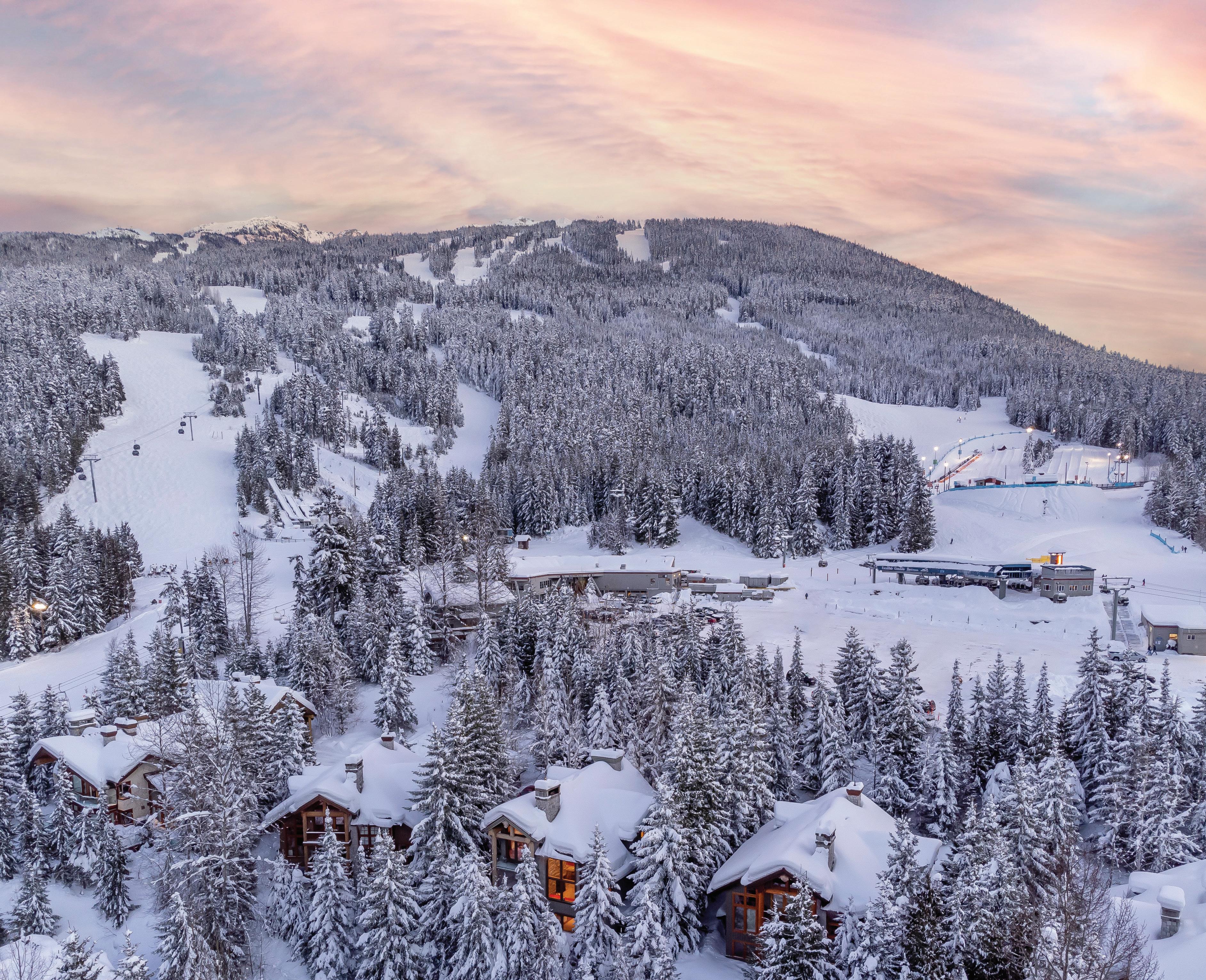

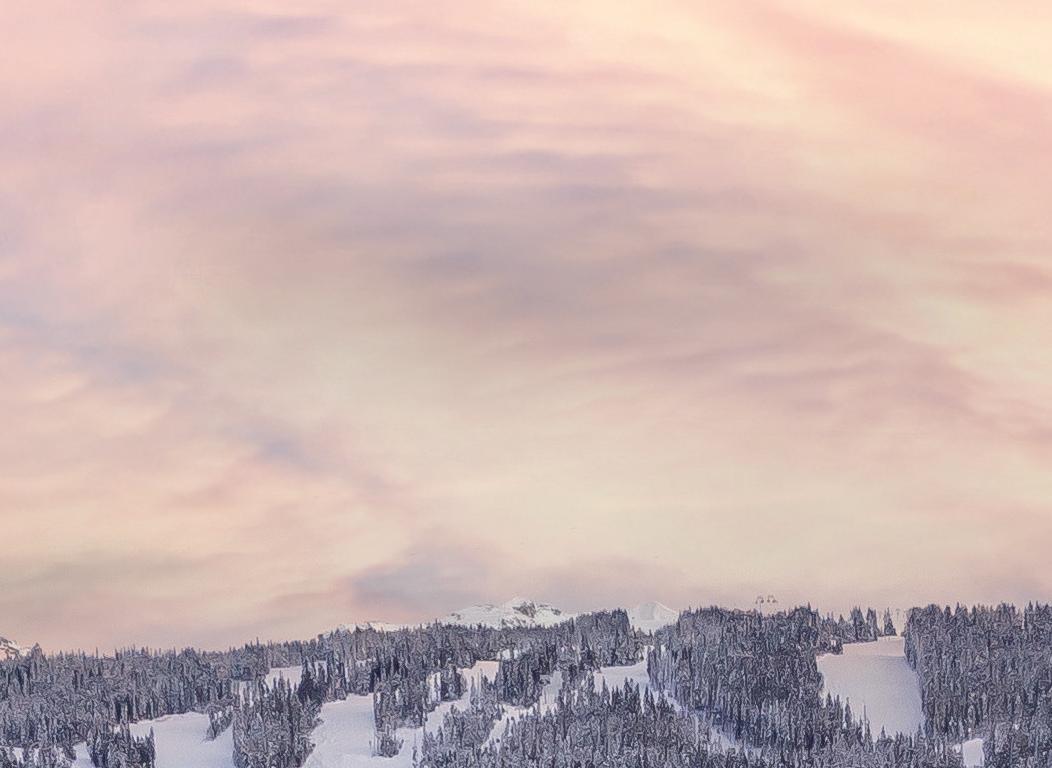


A VANCOUVER MAN injured in a bike crash at Lost Lake last summer is suing the Resort Municipality of Whistler (RMOW) for what he argues was negligence.

According to the civil claim filed Oct. 31 in B.C.’s Supreme Court, Jonathan Neil McCurdy was biking on the Lost Lake Park trails on or about July 24, 2022 when he reportedly struck a damaged post, causing him to trip and fall. As a result of the accident, the plaintiff said he sustained a fractured left elbow, elbow joint diffusion, and a fractured left wrist, among other injuries.
The injuries have reportedly caused and continue to cause pain, suffering, loss of enjoyment of life, permanent physical disability, loss of earnings, both past and prospective, and a shortened working life, McCurdy claimed.
The suit contends the accident was caused by the negligence and/or breach of duty of the RMOW for, among other things, failing to ensure the site was free of a damaged post; failing to inspect, blockade and cordon off the applicable area; failing to mark or warn of the hazard; and for failing to instruct its employees and/or contractors as to proper procedures.
McCurdy is seeking both general and special
damages, as well as past and future health-care costs related to the injuries.
In its response, filed Nov. 17, the RMOW denied any negligence or breach of duty on its part, arguing that the Lost Lake trails were “properly designed, maintained and inspected” and in “a reasonable condition” for their safe use.
“[N]o part of the Roadway constituted a risk, dangerous condition, unsafe condition or hazard, and the Municipality is not responsible in law for any injury, loss, damage or expense suffered by the Plaintiff, either as alleged or at all,” the filing read.
The response goes on to say that any injury sustained by McCurdy was caused or contributed to by his own negligence for, among other things, failing to pay proper attention; failing to keep his bike under control; riding his bike at an unsafe and/ or excessive speed; failing to ride as near as practicable to the right side of the roadway; and failing to wear adequate safety equipment, including but not limited to, a helmet and/or protective clothing.

The RMOW also contended that McCurdy failed to take reasonable steps to mitigate his injury and losses, including failing to seek medical attention in a timely manner and/or failing to seek alternative employment.
Notably, it wasn’t the first time this year the RMOW was sued for an injury near Lost Lake.
On Jan. 21, 2022, Vancouver lawyer Gerard Cuttler filed a civil claim against the municipality after he was allegedly injured the prior summer. The suit contends that, on or about July 25, 2021, Cuttler was riding his bike on Lost Lake Road, south of Horstman Creek, when he approached a marked crosswalk and allegedly collided with a thin, unmarked rope strung to a sandwich board and was thrown off his bike.
Cuttler reportedly suffered, among other injuries, a broken left clavicle that required surgery; pain, stiffness and restriction of his left shoulder and arm; and bruised and painful ribs.
As a result of the injuries, the plaintiff said he has undergone and continues to undergo medical treatment; has lost income and income-earning capacity; and has experienced and continues to experience pain, discomfort and emotional upset.
He is seeking both general and special damages as well as health-care and other costs.
In its initial response filed Feb. 7, the RMOW countered Cuttler’s claims, contending that the roadway was “reasonably safe” and did not constitute a dangerous condition or unusual danger.

The municipality also said, if the plaintiff suffered any injury or loss as alleged, it was because Cuttler failed to take reasonable steps to mitigate the extent of such injury and loss for, among other things, failing to seek medical
attention in a timely manner; failing to seek alternative training or employment “or in failing to return to his occupation in a timely manner.”
The suit took a turn last month when the RMOW filed a notice of application to be granted leave from the case and add a third party, LynSan Solutions, which was purportedly contracted by the municipality for its Western toad migration project. Pique has since learned that LynSan was not involved in the contracted work, but rather local resident Liz Barrett, who will be added as a third party to the suit, confirmed the RMOW’s lawyer.
As part of the service agreement, Barrett was tasked with educating and answering questions from the public about Western toads and their lifecycle; informing the public of all closures and detour routes; coordinating volunteers under the RMOW’s direction; and supervising toad-moving activities (every summer, a portion of Lost Lake’s trails are closed to allow for the migration of thousands of the tiny toadlets).
The RMOW argued in its initial application naming LynSan that the third party “owed a duty of care to post reasonable warning signs of the Rope and Obstacle that was placed across Lost Lake Road.” The municipality denies all responsibility and liability for the incident.
None of the above claims have been proven in court. Additional pleadings in the case will be heard next month. n







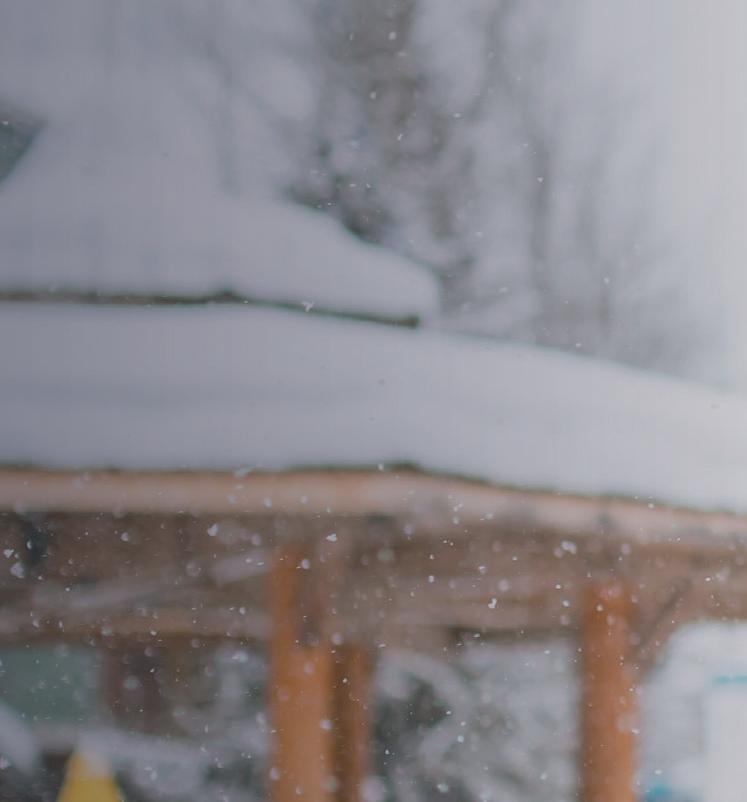




WHISTLER BLACKCOMB’S 2022-23 winter season hasn’t started the way resort officials hoped it would, but it seems not even a pair of delayed lift projects can dampen the December stoke.
Last time Pique checked in with Whistler Blackcomb chief operating officer (COO) Geoff Buchheister ahead of opening day on Nov. 24, the resort was planning a slate of temporary measures to keep guests flowing amid the delayed replacement of Big Red Express (targeted for sometime in early December) and Creekside Gondola (TBD, but ideally before the busy holiday period), including free shuttles lapping Highway 99 and expedited lift access for shuttle riders in Whistler Village.
With two weeks of winter operations now under Whistler Blackcomb’s belt, how are those temporary measures working out?
The COO appeared in front of Whistler’s mayor and council during a Committee of the Whole meeting on Tuesday, Dec. 9 to provide elected officials with an update.
The good news? Since the last remaining piece of equipment arrived for the new, 10-seat Creekside Gondola last month, “we now have everything that we believe needed to run these lifts,” Buchheister told councillors.

The resort was in “the final phases” of installing the new six-person Red Chair, he said. Load testing for the chairlift was scheduled to begin on Monday, Dec. 12, “with the hope of being open prior to [the following] weekend,” he explained. From there, workers will carry out the final commissioning and load testing on Creekside Gondola, in the hope of opening that lift in time for the Christmas holiday.
“Obviously this last phase is one that [comes with] no guarantees, but we are coming down to the final pieces of this project and it feels really good to see cabins rolling around the line on the Creekside, which are now all 100-per-cent on the lift as of [Dec. 5],” said Buchheister.
In an email on Dec. 13, a Vail Resorts spokesperson confirmed Whistler Blackcomb anticipates opening Red Chair “very soon,” but said the company was unable to announce an official date before testing is complete.




Technical Safety BC is the independent organization tasked with issuing operating permits for technical systems and equipment across the province, including ropeways like chairlifts and gondolas.
Before the new lifts open to the public, the Blackcomb, Excalibur and Whistler Village gondolas are the only avenues available to skiers and snowboarders heading uphill.
The contingency plan Whistler Blackcomb’s team created to get Creekside guests to those lifts amid the delays is “one of the things maybe


I’m most proud of,” Buchheister told Whistler’s elected officials Tuesday.





The COO said he was happy to report “great feedback” on the shuttle service that has been operating daily since Nov. 24.


“We’ve had days of over 1,200 riders on shuttles, going back and forth to Creekside,” he explained. Meanwhile, “the lift-line priority has been working out phenomenally well,” Buchheister added. “I think that’s
next summer.
The resort announced in September plans to replace Whistler Mountain’s fourperson Fitzsimmons Express lift with an eight-person, high-speed chair, and swap out Blackcomb’s Jersey Cream for a high-speed six-pack. The brand-new lifts were originally earmarked for Vail Resorts’ Park City property in Utah, but were stalled by permitting delays.
Currently, Whistler Blackcomb is “in the final phases of approval on both” lifts, said Buchheister. The resort has already secured approval from the province and the Lil’wat Nation, while Squamish Nation is carrying out an environmental analysis before “we finalize, and hopefully get their approval on moving forward on those chairs,” the COO explained.
- GEOFF BUCHHEISTER




been a huge hit for the folks that are riding the shuttle.”
The resort is also offering a 50-per-centoff food deal at Dusty’s for guests looking to après after hopping off the shuttle. “It’s been a nice addition for us in terms of just kind of keeping Creekside vibrant while the lift is still kind of in its final phases,” he said.

Even though the new Creekside lifts haven’t officially started spinning, Whistler Blackcomb’s sights are already set on another pair of lift upgrades scheduled to take place
“We also recognize it’s an ambitious project and one that will require us to continue to operate our bike park around, specifically, the Fitzsimmons installation,” Buchheister explained, “but we’ve got a great team and a great plan and I feel positive and optimistic about how the summer will go next year.”
Whistler Blackcomb plans to add almost 20 kilometres of new trails to the Whistler Mountain Bike Park’s Creekside Zone next summer. Those, in conjunction with the increased uphill capacity provided by the new Creekside Gondola, will ideally help mitigate construction disruptions during the summer season. n


“[T]his last phase is one that [comes with] no guarantees”














 BY ROBERT WISLA
BY ROBERT WISLA
WHISTLER’S MUSEUM is one step closer to getting a much-needed building upgrade thanks to a new deal signed with the Resort Municipality of Whistler (RMOW).

On Dec. 6, Whistler council approved a 60-year lease agreement that enables the Whistler Museum and Archives Society (WMAS) to initiate a fundraising campaign for the capital required to construct and equip a new museum in its current location.
“We are excited to see the process for building a new museum facility moving forward. The Museum Board of Directors has been working towards this goal since 2014, and seeing real progress is great,” said museum executive director Brad Nichols.
Since 2009, the Whistler museum has been housed in a small (280-square-metre), semi-permanent structure of conjoined trailers located on a portion of Lot 20 at 4333 Main Street, adjacent to Florence Petersen Park and the Whistler Public Library.
Creating a new building has been in the works for almost a decade. First proposed in 2014, the museum’s need for space has only grown over the last few years as archival space hit capacity resulting in many museum items, such as Whistler pioneer
Myrtle Philip’s canoe, not being displayed. (It is currently on display at the library.)
WMAS investigated six potential sites for a new building, all of which proved unacceptable to the RMOW or the WMAS, before deciding to stick with its current location. The society hired Murdoch & Company Architecture Planning Ltd. in 2019 to prepare various design options for a new building on Lot 20.
The proposed building will be three times the size of the current building (927 square metres). The two-storey building will include display areas, a foyer, a reception desk, and a gift shop that will also serve as a gathering place for groups and events. Additionally, the building will include the structural ability to add a third storey if the museum needs to expand at a future date.
With the expansion, the museum estimates that visitor numbers will double compared to 2019, when 14,410 people visited the exhibits. The expanded gift shop and venue space will also provide the museum with additional income.
The lease agreement with the RMOW is contingent on the museum raising enough money for construction. In November 2021, the museum society received a cost estimate of $7,130,987 to construct and equip the proposed building. With rising costs for construction and needed contingency funds,
the museum has set a fundraising goal of $9 million.
WMAS must raise 80 per cent of the necessary capital funds within six years (by Dec. 31, 2028), or the RMOW will revoke the lease. As it currently stands, the museum needs $5,704,789 to complete the project.
While $9 million might seem like an ambitious goal, the museum has already identified numerous funding sources, including 250 potential donors in the Whistler community who are supportive of a new facility.
The project is eligible for a few different funding sources, including the Canada Cultural Spaces Fund, the Community Economic Development and Diversification in BC Fund, Museums Assistance Program, and Resort Municipality Initiative. WMAS estimates half of the costs will come from donations, with the remainder from capital grants and foundations.
The museum aims to acquire the $9 million within three to five years, with the majority coming from the Canada Cultural Spaces Fund for organizations that already own or have long-term leases. The North Vancouver Museum received $3 million for a new facility in 2016 from this fund.
Construction of the new building will start once the museum society raises sufficient funds and takes down the existing building.
The museum estimates construction of the new faility to take between 12 and 18 months. 2027 is the earliest date a new facility will be available, as a temporary artifact storage location is required.
“A new museum will allow us to preserve and showcase Whistler’s natural and human history for generations to come. A new facility would house and protect expanded museum exhibits that can better utilize our extensive collection of artifacts and archival material and ensure safe storage of these collections for residents, visitors, and researchers,” Nichols said.
“The growth and development of Whistler into a world-class resort is unique and deserves to be celebrated, along with the many people who have been part of Whistler’s history.”
Whistler Mayor Jack Crompton welcomed the project at the Dec. 8 council meeting, thanking RMOW staff, councillor Cathy Jewett, museum staff, and volunteers who were in attendance at the meeting.
“We’re excited to cheer you on and see you raise the money for the museum. This is a good step. I’m really pleased and grateful for all the work that’s been done to get us here,” Crompton said.
If you wish to donate to the museum, check out the Whistler Museum donation page, whistlermuseum.org/join-support. n


RECENTLY, WATCHING multiple beds being taken into a Squamish home that was formerly a bed and breakfast concerned at least one of its Garibaldi Highland’s neighbours.
Neighbour Peder Ourom soon discovered that the Four Seasons Resort and Residences Whistler was renting the Glacier View Drive 6,000-square-foot home for some of its seasonal workers.
Ourom says he is concerned both for the employees who will live there and for local families who are desperate for housing, but can’t find it.
“Why aren’t those suites rented out to the desperate [Squamish] people in need?” he said. “If that were two couples that work in Squamish ... it’d be great when we’re desperate for a lot of accommodation, and there’s almost none.”

It also doesn’t sit well with Ourom that employees for an established hotel chain that is majority owned by billionaire Bill Gates’ company have to be shuttled up and down the highway to Whistler.
“It seems to me it’s not the best for the employees,” he said, arguing the hotel should
build enough worker housing in the town where they work for its employees.
Carolina Pires, director of public relations for the hotel, said it houses 50 per cent of its workforce.
“We have a well-established employeehousing model, including employee housing onsite within the resort, and in many offsite homes in Whistler and the surrounding community,” Pires said in an emailed statement.
While Ourom said he thought he saw close to 40 beds going into the home, Pires said that number was way off.
“The maximum number of people allowed per bedroom is two employees— following bylaws—therefore, the number … is very inaccurate.”
She did not say how many employees would be living there, but a real estate listing for the home states there are seven bedrooms total.
tenant, to make sure that the property meets District and BC Building Code requirements.
“The District does not control who lives in a dwelling unit, as long as it is being used for residential purposes. The District’s role is to ensure compliance within the BC Building Code through building permitting process so that all buildings comply with provincial safety and health requirements, including fire safety requirements,” said District spokesperson Rachel Boguski.
- ARMAND HURFORD“Our housing model in Squamish aligns with our existing, well-established housing model, including addressing concerns such as safety, security, noise control and parking.”
Pires said there is a formal lease regarding the rental of the home in Squamish. She added that the hotel is working with the District of Squamish “to ensure the usage of the home is in compliance with all bylaws and zoning regulations.”
“Two additional one-bedroom suites with private entrances ... plus five bed/five bath in the main home,” the listing reads. It also says there are six parking spots.
As of Dec. 11, Pires noted there were no employees at the house yet.
The District said it has heard the concerns from the public regarding a property on Glacier View Drive and is conducting an investigation, including working with the
The District’s building department is responsible for enforcing municipal bylaws, and enforcement practices vary depending upon the nature of the offence. These range from posted notices to fines to educational discussions and, hopefully, voluntary compliance. Ultimately, life safety is the primary concern, Boguski added.
“We know that a percentage of our local workforce travels outside of Squamish for work, so in some ways Squamish has been housing a portion of the regional workforce for quite some time,” said Mayor Armand Hurford in an email. “That said, housing availability and affordability continue to be a major concern in Squamish and the need for a regional approach is crucial to prevent larger scale ‘spillover’ of unmet housing needs. Collectively we can do better, and I’m looking forward to working on this with my council colleagues and counterparts regionally and provincially.” n
























THINK TWICE ABOUT pulling that fire alarm when there is no fire or having a charcoal barbecue at the park, as new fines and fees at Whistler’s municipal hall might set your wallet ablaze if you do.
At the Dec. 6 Whistler council meeting, councillors approved amendments to the Resort Municipality of Whistler’s (RMOW) fire and life safety bylaw that will see a variety of new fines introduced for false alarms, using charcoal barbecues in municipal parks, and additional fees for firefighter services.
The bylaw amendments prohibit charcoal briquettes in municipal parks at all times due to the risk of burning substances being disposed of in the garbage. Those caught using charcoal briquettes will face a $150 fine ($100 if paid early). Propane barbecues are still allowed under the amendment, even in extreme fire conditions.
Under the previous bylaw, all municipal addresses were allowed one free false alarm per municipal address; this will no longer be the case. All false alarms will cost $250 per occurrence to reduce the number of costly call-outs.
Currently, the Whistler Fire Rescue Service (WFRS) receives more than 500 false

fire alarm calls annually due to construction work, testing without notification, poorly maintained systems, cooking, and deliberate acts of nuisance.
The RMOW will not issue fines for alarms that result from an actual fire, or if the alarm call is cancelled or confirmed false before personnel respond from the fire hall. The estimated increase in revenue from the change will be about $125,000 annually if false alarms continue at current rates.
The amendment also adds a $500 fine ($300 if paid early) for industrial logging operations failing to call 911 in the case of a fire—$500 is the maximum a municipality can fine an individual for any bylaw infraction.
The bylaw amendments also simplify
 SERVICES
SERVICES
notice period, they will face a $150 standby fee and an additional $150 levy every 15 minutes beyond the 30-minute notice period.
A “no runner” fee of $150 is also being introduced for situations when the fire department requires a property representative to attend to the premises to provide access or security, and no such representative is made available to attend.
The bylaw amendment also adds Wildfire Act provisions recommended by the Forest Practices Board following an audit of the Cheakamus Community Forest last year.
and increase fees for WFRS services. The building inspection service fee will now be $125 for all buildings inspected by the WFRS. Under the previous bylaw, inspections for buildings less than 5,000 square feet cost $100, while inspections for buildings larger than that cost $150.
The RMOW expects the change will result in $150,000 of additional revenue.
The standby fee for call-outs to buildings requiring property managers or security to allow access is also simplified, replacing a complicated resource calculation formula with a flat fee.
Under the new structure, if a property manager or designated representative does not attend to the property within a 30-minute
“In May 2022, the Forest Practices Board contacted the Cheakamus Community Forest (CCF) and the RMOW. During a routine audit, they found eight slash piles were not removed from the site. That was due to high fire hazard at the time, so the CCF was aware of that,” said protective services planning analyst Kevin Creery in a presentation to council.
“The slash piles have since been removed, but through that audit, the Forest Practices Board recommended the RMOW add the Wildfire Act provisions into our fire and life safety bylaw, which were not there currently.”
The bylaw amendment received first readings at the Dec. 6 council meeting, and will come back for adoption at a future meeting.
The changes are expected to take effect in January 2023. n
Pursuant to section 24 and section 26 of the Community Charter and in accordance with section 94, notice is hereby given that the Resort Municipality of Whistler (RMOW), at the direction of Council, intends to dispose of by way of lease, a portion of 4333 Main Street legally described as:
PID: 017-371-180
Lot 20 District Lots 3483 and 5275 Plan LMP219 and that portion of Florence Petersen Park dedicated by plan LMP219, as both are shown in the below sketch, to the Whistler Museum and Archive Society (WMAS). The term of the lease shall be sixty (60) years commencing on January 1, 2023, with a right exercisable by WMAS to renew the term for a further fifteen (15) years. WMAS shall use the premises for the purpose of constructing and operating a museum and archives open to the public. The price paid to the RMOW is annual rent of $1.00 plus other good and valuable consideration.
The Lease will enable WMAS to initiate a fundraising campaign for the capital required to construct and equip a new museum on the land. The Lease requires that WMAS must raise 80% (eighty per cent) of the estimated costs of constructing a new building on the premises within six (6) years of the day that the lease is entered into. If 80% of the estimated costs have not been raised by that date the Lease the RMOW may terminate the Lease. The Lease also requires that prior to issuance of any permits, the RMOW will require proof of complete fundraising and the continued assurance of a risk transfer model for the construction of the new facility.
This is NOT an offering for sale or a disclosure statement, but merely a municipal statutory notice.
This is the first of two notices respecting this matter.










THE SQUAMISH-LILLOOET Regional District governs an incredibly diverse area stretched over 16,312 square kilometres, from semi-arid ranches and wineries surrounding Lillooet to the isolated mining towns of the Bridge River Valley north of Pemberton and the increasingly urbanized Sea to Sky corridor.
Managing such a vast area is a difficult task, as interests from every region need to be addressed, sometimes with varying solutions. Juggling the competing priorities and keeping meetings running smoothly is the job of the annually rotating chair.

Recently, Whistler Councillor Jen Ford was re-elected as SLRD chair for the third term in a row.



Pique caught up with Ford to chat about the challenges facing the regional district and its priorities for the coming term ahead.
This interview has been edited for length and clarity.
How does it feel to be re-elected chair three years in a row?
JEN FORD: It’s a big responsibility, and I take it seriously that the board has trusted me to continue working in the role. It’s a great team, we’ve been working really hard together, and it’s nice to have their support.
Looking back on your last year as chair,
are there any accomplishments the board made that you’re proud of?
I’d say that we’re very proud of the work that we did. There have been a lot of projects, like Britannia Beach, and to see that come together is exciting because it’s been a project that no one really knew what was happening with it. You saw the signs down in Britannia, but it was one of those ‘someday’ projects, but now, to see the buildings actively being built is exciting.
Whenever you see those physical pieces coming together, that’s just what you see, but the hours and years that staff have put into that development are really wonderful to see it finally coming together.
During the last term, the WedgeWoods Phase 7 expansion, Furry Creek expansion and South Brittania all came before the board. How likely do you think it is that we’re going to see these projects come to fruition during this coming term?
These things take a lot of time. I doubt that any of them will be finished in 2023. I don’t know, though.
We’ve given permission to proceed on WedgeWoods, which means we can now work with the developer, and I know that he’s done a tremendous amount of work to get to the point where he can get in front of the board for the permission.
There are pieces to get to the first reading. So I’m hopeful it’ll move quickly through
Think of Dr Joe Greenholtz as the living embodiment of a roadmap that concisely gets you from point A to Z along the often complex route toward Canadian citizenship
A regulated Canadian immigration consultant, Greenholtz is the founder of Dr Joe’s Immigration Consulting Services, a vital lifeline for those coming to Canada temporarily or full-time.
Greenholtz represents clients through the maze of bureaucracy and questions, filing applications on their behalf and answering client queries, government questions or requests for extra documentation.
And his resume speaks for itself: Greenholtz has served as vice chair of the Immigration Consultants of Canada Regulatory Council (ICC RC) Board of Directors and as chair of ICC RC’s governance and nomination committee.
Perhaps his biggest ace in the hole? Years of experience working as a Canadian visa officer with postings in New York, New Delhi and Tokyo
“The real value that I add is that I understand how visa officers think and what factors are impor tant to them in making a decision to approve or refuse an application,” Greenholtz explains.

The lion’s share of Greenholtz’s clients in Sea to Sky country are from Australia, New Zealand, Ireland, the U.K., and other par ts of Europe. Typically, they’re temporary workers navigating the federal points system to attain permanent resident status.
What differentiates Greenholtz’s service is not just his breadth of knowledge and experience, but also his price points and concise consulting sessions. Where his competitors can charge five times more than he does along a series of consultations, Greenholtz gets down to business from word one.
“Clients, and even everyday folks, have a very fogg y idea of how the immigration process works,” he reveals. “A lot of their information comes from friends who are in similar situations, but in immigration, the details are paramount The purpose of every
even one day off, could make the difference between receiving approval or not . Some don’t even know their application for permanent residency could be approved had someone given them a comprehensive review.
There are other impor tant details
Years of experience working as a Canadian visa officer with postings in New York, New Delhi and Tokyo.

consultation is to find out what you want to accomplish and how we get there. And I only charge $50.”
business owner was working onsite in his trade from the hours he spent actually managing the business, which permitted him to double dip on his work and benefit from both halves.
“What a client wants to accomplish may be counterproductive, and it may be a dead end,” Greenholtz explains. “So you have to get a comprehensive overview of what that person wants to achieve in Canada and work backwards from that ”
Greenholtz’s detail-focused, straightto-the-point approach removes the confusion from what can be a convoluted process
that Greenholtz knows well. He recalls working with a client who wasn’t a permanent resident of Canada and didn’t know that business ownership didn’t count towards requisite work hours for his application.
For example, listing a bir thday,
However, Greenholtz was able to separate out the hours that the
To book a consultation, or to learn more about how Greenholtz can help you on your path to temporary or permanent residency, visit drjoeswhistler.setmore.com. Dr Joe specializes in creating strategic plans to help you reach your immigration goals utilizing his years of
as a visa officer and a licensed Canadian immigration consultant A consultation with Dr Joe will
the fastest, most efficient
the process, but we also want it to be done right. We want to be sure that we consult with the community that it’s going to affect the neighbours around there and that it is the right fit for the property it’s going on.
Furry Creek … it’s maybe gotten more attention in the last year, but it’s certainly been in the process for a long time, so we’re very close with that one. We’ll probably see that one come very quickly now.
There are still lots of negotiations between staff on community amenity funds and stuff like that. So those negotiations are ongoing, and you really can’t predict how long that will take.
What challenges do you see ahead for the Regional District during this coming term?
I think the whole province is seeing a massive need for a variety of housing. Whether it’s availability, affordability, residents, or second homeowners, we talk a lot about the
a complete community is very important, especially when we’re also trying to manage and understand our impact on climate change.
With regional transit, that’s still very much a priority. It feels like it’s stalled out, it feels like we’ve been talking about it for 20 years, and we have. But we’re very encouraged after meeting with the province about regional transit.
They’re very much open to talking about it because their mandate letter states that the Sea to Sky regional transit system is important to approaching our climate goals and completing our community in a meaningful way.
At Whistler’s budget open house on Dec. 1, Mayor Jack Crompton briefly mentioned the region could potentially get the province to add a regional gas tax to fund regional transit. Is this a possibility or a policy of the regional district?
It’s not a policy. I would say that it’s one of the tools [to fund regional transit]. There are many ways to skin a cat, and one of the ways to fund regional transit would be taxpayer
- JEN FORDhousing in Area A. It has traditionally been summer cottages, and now it’s becoming permanent housing, and so how residents interact with the community as their permanent home, it’s a big topic, and how we serve the needs of all the residents with workforce and employee housing, there are so many different aspects to it.
Like every other area, our community is undertaking a big, broad look at what the housing needs are, like housing for farmworkers in our agricultural areas. It’s a super big topic; you could write a whole newspaper on it.
We’re trying to address the needs of all the different areas while respecting the regional growth strategy. And we are still keeping our eye on the fact that there are a lot of new needs that aren’t being met, and we want to make sure that we can house the people that live here.
Many of the projects the SLRD deals with, like the Benchlands development in Pemberton (which extends partly into the SLRD) or WedgeWoods development expansions, bring about conversations on the municipalities sprawling out.
How do you deal with the challenges around sprawl in the regional district as each new project grows?
We take the decisions we’re making today very seriously, how the decisions are going to affect the needs of the surrounding residents and the neighbouring communities. To build
money, which I don’t think anyone feels that that’s necessarily the sustainable way to do it. Or a fuel tax like they have in the city, which is an established model of funding regional transit. It’s how they fund Fraser Valley Regional District transit and transit on Vancouver Island.
So it’s not a new thing. It’s not a policy. But it’s one of the options that we’ve put on the table with the province to say, if we were going to fund this, how are we going to fund it? And this is one way of doing it.
What can you tell me about the recent strategic planning session you and the other directors had?

We had that (Dec. 1 and 2), two very full days, where we talked about [priorities for the coming term], and I guess every regional district and municipality goes through this at the beginning of the term because we have some new members and lots of returning members. We have a new CAO, who is very forward-looking. He’s very astute about the needs of the regional district, which is awesome.
It was our opportunity to work with senior staff and the new board and say, How will we work together? What’s important? And how will we get the best out of the next four years? …
We came up with our four priorities, and they’re not very exciting. They won’t make big headlines, but good governance and healthy organizations … housing and regional transit
the focus of our big four priorities. n
are
“[I]t feels like we’ve been talking about [regional transit] for 20 years, and we have. But we’re very encouraged after meeting with the province about regional transit.”
Members of the public are invited to review and provide comments on the proposed 2023 to 2028 Forest Stewardship Plan (FSP) #941 for BC Timber Sales (BC TS), Chinook Business Area, which will replace the current FSP #644. A FSP is the main operational and strategic level planning document under the Forest and Range Practices Act The FSP outlines how BC TS will meet the government ’s regulator y objectives for forest management
The FSP is a landscape -level plan under the Forest and Range Practices Act I t shows the location of forest development units (areas where timber har vesting blocks and associated roads may be proposed). The FSP does not indicate sitespecific locations for proposed blocks and roads Site -specific referrals of the proposed block and road development will be conducted annually and follow the results, strategies and measures approved in the FSP Adjustments to the proposed FSP may be made based on comments received during this period The proposed FSP and related maps can be viewed at:
• http://ow.ly/Ht v y50M1xeC









• Or, from Dec 15, 2022 to March 1, 2023 by appointment at BC Timber Sales, Chinook Business Area, #101-42000 Loggers Lane, Squamish, B.C., V8B 0H3



Written comments can be submitted by mail or email and must be received on or before March 1, 2023.





To obtain further information, arrange a viewing time or submit written comments, contact Stephan Bernhard, Planning Forester, at Forests.ChinookTimberSalesOffice@gov.bc.ca or write to the above address.
There are a number of reasons to refocus your gifting habits this year. Whether you’re concerned about the environment, not sure what to purchase or looking for more far-reaching presents, tak e a look at the community around you. In Whistler, we’re luck y to have a very caring community. From environmental to health to homelessness, there are many worthwhile causes to consider supporting this Christmas. Especially in such difficult times it is more important then ever to provide assistance if we can. Please consider making a donation to one of these worthy local causes. guidedby.ca/spotlights/sea-to-sky-season-of-giving


AN OFFICIAL COMMUNITY Plan and Zoning Bylaw amendment application at Pemberton’s municipal hall could add a new 35-lot subdivision south of Den Duyf Park—but first the Village wants to hear from residents.
At its Dec. 13 meeting, Pemberton council heard a report on the development, dubbed Parkside, and the “early and ongoing” consultation the Village of Pemberton (VOP) plans to undertake with the community prior to breaking ground.

The subject property is located at 7362 Pemberton Farm Road East, south of the Den Duyf Park recreation site and north of the existing Pemberton Plateau neighbourhood. If successful, it could lead to dozens of new homes going up.
Parkside, if built in its conceived form, would encompass 34 small residential lots ranging from 300 to 956 square metres in size
(which would be classified as strata housing).
The 35th lot would become a commercial property meant for neighbourhood-scale commercial uses. While the commercial lot is meant to be significantly larger than the residential ones, an exact size has not yet been determined.
The development proposal was submitted by Grant Gillies and Riverside (Pemberton)
about Parkside are still taking shape. Much more information will become available when the VOP hears the actual application at a future date.
“The real purpose of this report is to ensure that the Village … establishes its consultation obligations [regarding a zoning amendment],” said Brown.
A VOP bylaw allows council members to
Therefore, Brown recommended that council require an additional information meeting be held at a more accessible venue, and that such a meeting be more widely advertised to the public. Elected officials supported the recommendation.
Brown’s report comes two weeks after another council presentation illustrated the dramatic population growth that Pemberton has experienced over the last five years.
Nominee Ltd.
The amendment to Pemberton’s Official Community Plan (OCP) and Zoning Bylaw is required to allow development of the site for residential and commercial uses.
Planner Colin Brown, who gave the presentation to mayor and council, emphasized that the development application itself is not yet ready, and thus many details
require that real estate developers organize public information meetings about their proposals. Gillies and Riverside had already held such a meeting on Nov. 1, which was attended by about 35 individuals. However, the meeting conflicted with the inaugural VOP council session that night, and took place at Sunstone Golf Course, which has limited accessibility for those without vehicles.
The property in question is known as a “brownfield site”: an area that has been previously used as a quarry, resulting in significant impact to the surrounding landscape, and with no opportunity to restore the land to a natural state. This is in contrast with a “greenfield site”, which refers to a relatively untouched natural area. Current zoning regulations—which are a holdover from the property’s past as a quarry—only allow it to be used for forestry and resource extraction purposes.
In response to questions from Pemberton resident Niki Vankerk, Mayor Mike Richman explained that the area was once part of the Agricultural Land Reserve (ALR) but was excluded from that designation in 2013. Brown added that the property is considered part of the Hillside Special Planning Area, even though it is not technically on a hill. n
PARKSIDE PROPERTY An aerial view of the proposed development site at Den Duyf Park. SCREENSHOT / VILLAGE OF PEMBERTON“The real purpose if this report is to ensure that the Village ... establishes its consultation obligations.”
- COLIN BROWN



































































































































































Check
V isit the Museum Shop on Blackcomb Way, open Thursdays to Mondays from 11am to 6pm or shop online at shop.audainartmuseum.com











































Surefoot’s proprietar y fitting process fits you into the most comfor table and best per forming boot you could imagine, immediately. With 3D imaging, custom fit insoles, memor y foam injected liners, and an integrated heating system, you ’ re ready for the best skiing of your life– in just over an hour Whether you ’ re a beginner or a seasoned exper t, Sure foot has the right boot for you Come in and experience the Surefoot difference today.
SKIER: Camilla Fraschini, Surefoot buyer (6 yr.)

















































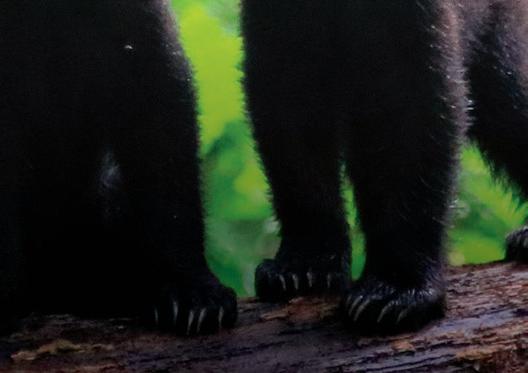







































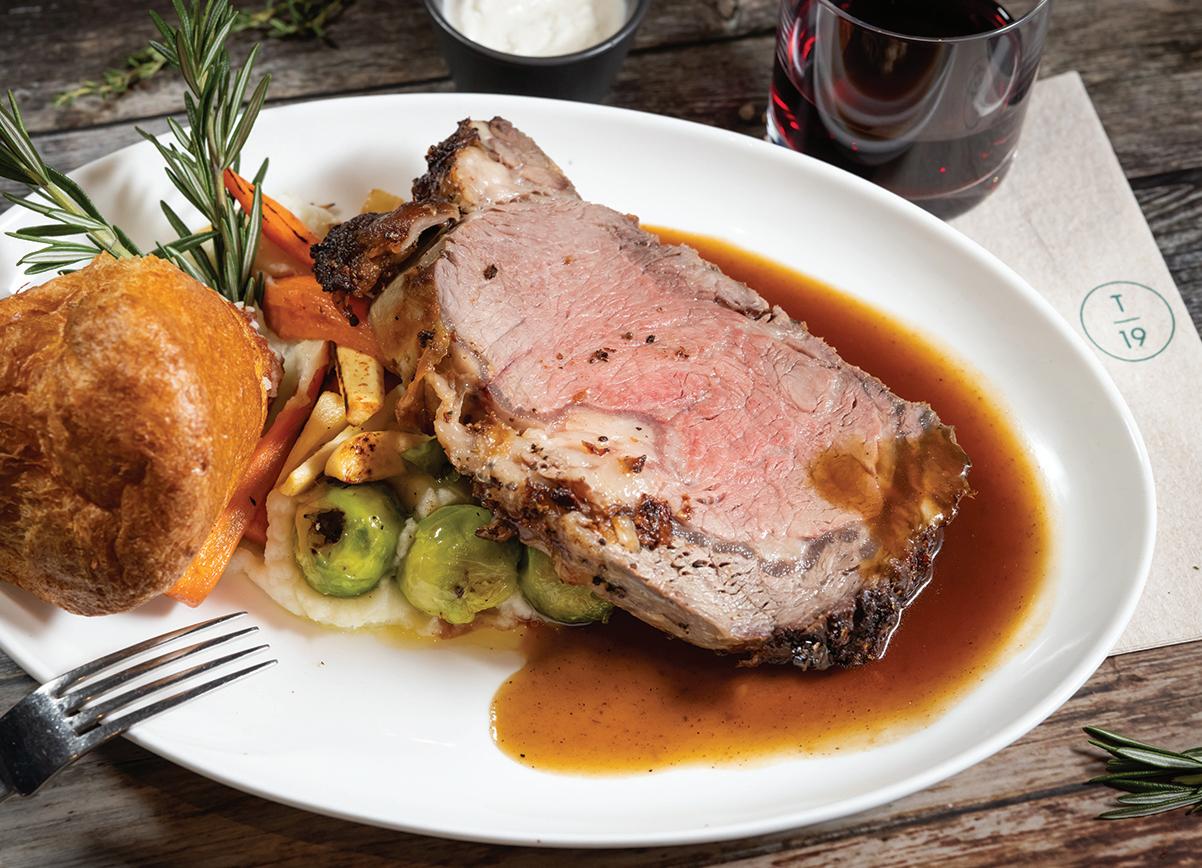






IF YOU’RE CELEBRATING the festive season with cheese, bread and a glass of wine, beer or kombucha followed by chocolate, it might be a good time to think about fungi. It’s what makes all those tasty items possible!
In fact, almost all food production relies on fungi. Most plants need it to obtain nutrients and water. Trees and other plants in a forest connect through intricate fungal, or mycorrhizal, networks of tiny mycelium threads that transfer nutrients, water and information between them, and that facilitate decomposition, without which life couldn’t go on.
BY DAVID SUZUKI
All fermented foods—including beer, wine, chocolate, cheese, bread, soy sauce and tofu—require yeasts, a single-celled fungus. Fungi have also been indispensable in preserving foods. And cows and other ruminants need gut fungi to break down grass.
“They are also to be thanked for many of the important medical breakthroughs in human history that treat both physical and mental ailments, for naturally sequestering and slowly releasing carbon, for optimizing industrial processes, and so much more,” a Guardian article reports.

Fungi fascination is spreading—from the popularity of gut-healthy fermented foods to fungi’s potential to help solve a range of environmental problems to research into mental health treatments using psychoactive mushrooms. But many people don’t go much deeper than momentary wonder at a brilliant
smuts, mildews, moulds and mushrooms. Scientists also recognize two other classes, monera (which includes bacteria) and protista (which includes protozoa, algae and slime moulds), and some divide those further.
Of an estimated 3.8 million types of fungi, only about 10 per cent have been identified and studied. What we’re learning is fascinating and critically important, and illustrates the interconnectedness of all life.
“They’re really weird organisms with the most bizarre life cycle. And yet when you understand their role in the Earth’s ecosystem, you realize that they underpin life on Earth,” said Kathy Willis, director of science at the Royal Botanic Gardens, Kew, which leads “State of the World’s Plants and Fungi” assessments.
Despite fungi’s many benefits, some can be dangerous or deadly to plants and humans and other animals. But understanding the crucial role they play in the web of life is critical if we’re to resolve the many environmental crises we face.
To start, they offer many solutions—from breaking down plastics to decontaminating industrial sites to sequestering atmospheric carbon. Even the use of psilocybin mushrooms in mental health treatment could help with societal resilience during increasingly anxious times. But fungi also connect and support so much of life.

Although knowledge about fungi and their importance is growing, “they represent a meagre 0.2 % of our global conservation priorities,” the organization Flora Fauna Funga reports. More than 1,300 scientists, researchers, activists and citizens from 77 countries have joined FFF’s call “for fungi to be recognised within legal conservation frameworks and protected on an equal footing with animals and plants.”
red and white-spotted Amanita muscaria while walking in the forest, or repulsion at mould on bread.
For something so critical to all life, it’s surprising how much we have yet to learn about fungi and how much of our scientific knowledge is relatively recent—although many Indigenous Peoples have long known much of what Western scientists are now discovering about fungi and mycorrhizal networks and their roles in ecosystems.
Until 1969, Western botanists classified fungi as plants. Now we know they’re more closely related to animals but are in their own class. Unlike plants, which produce their own food through photosynthesis, fungi secrete enzymes that dissolve surrounding nutrients, which they then absorb.
We’ve gone from two to three Fs, for the most part, in classifying life: “fauna, flora and funga.” The latter includes yeasts, rusts,


We often ignore what we can’t see. Yet there’s an astounding, intricate mycorrhizal web beneath our feet, holding soil together, distributing nutrients and water and enabling communication between plants. Fungi are part of everything we eat, provide us with medicines, offer environmental solutions and are key to the constant cycle of birth, death, decay and rebirth.
We must do all we can to protect wild spaces, agricultural soils and urban green spaces and the fungi that inhabit them. Mushrooms can live without us, but we can’t live without them. Ponder that over your festive meal!






David Suzuki is a scientist, broadcaster, author and co-founder of the David Suzuki Foundation. Written with contributions from David Suzuki Foundation Senior Writer and Editor Ian Hanington.



I HAVE A RECURRING dream. In it, I’m flying down an endless, perfectly angled fallline run with shin-deep powder billowing behind as I sweep over berms and sidehills, dropping hundreds of leg-burning metres as a leitmotif of snow-clad forest flashes by. Weirdly, instead of channelling some backcountry idyll,
BY LESLIE ANTHONYthis magical vignette unfolds on a piste, as if my subconscious knows something I’m loathe to voice—that the solid, predictable base of a well-groomed run buried in new powder can be as good as skiing gets.
In addition to classic powder-hounding, I chase this snow-on-piste beast across the world’s ski areas. It’s a good pet to have in your pocket—particularly in early season when powder dumps on well-pounded pistes are far safer than pursuing fluff on questionable off-piste obstacle courses. Thus, as I made my way over the Duffey last weekend through a thick snowstorm en route to Sun Peaks—one of Canada’s best piste destinations and an early season standout by any measure—I was pretty sure I’d be taking it for a walk.
I wasn’t wrong. With a significant storm dumping what seemed like far more than Sun Peaks’ usual dry, dependable tranches, we
thought to let it fill in a bit and start our trip with some laps on the resort’s 37 kilometres of hill-and-dale Nordic trails—well-covered even at this point in the season. It paid off when the next day proved sunny and still powder-ful, a function of low crowds and the ability of the hill’s seven chairlifts to spread skiers and riders across the three unique faces of Tod, Sundance and Morrisey mountains. Indeed, it seemed entirely criminal that we found an abundance of powder to ski a day
centimetres above them.
While the ski world is full of superb cruisers, they’re often overlooked in the scramble for steep, deep and off-piste adventure. And while perfectly groomed cruisers are short-lived mythical creatures elsewhere (in Whistler they can only be sighted between 8:30 and 9:30 a.m.), they’re a longer-lived daily reality at Sun Peaks, whose carpets of perfection win consistent praise, a particular charm that draws skiers
a range of casual to fine-dining, intimate to family friendly, local to international cuisine. These days, with the town growing fast as a place to live (with only 1,400 residents, it even has a school), its spacious charm may last only a few more seasons.
Space, of course, is a key ingredient for cruising. And the 4,270 acres of skiing spread across Canada’s second-largest ski area offer more of it than many comparably sized resorts. In addition to wide-open speedways, some runs feel like secretgarden glades—only you’re not dodging trees because they’re wide enough to pull off big, arcing GS turns.
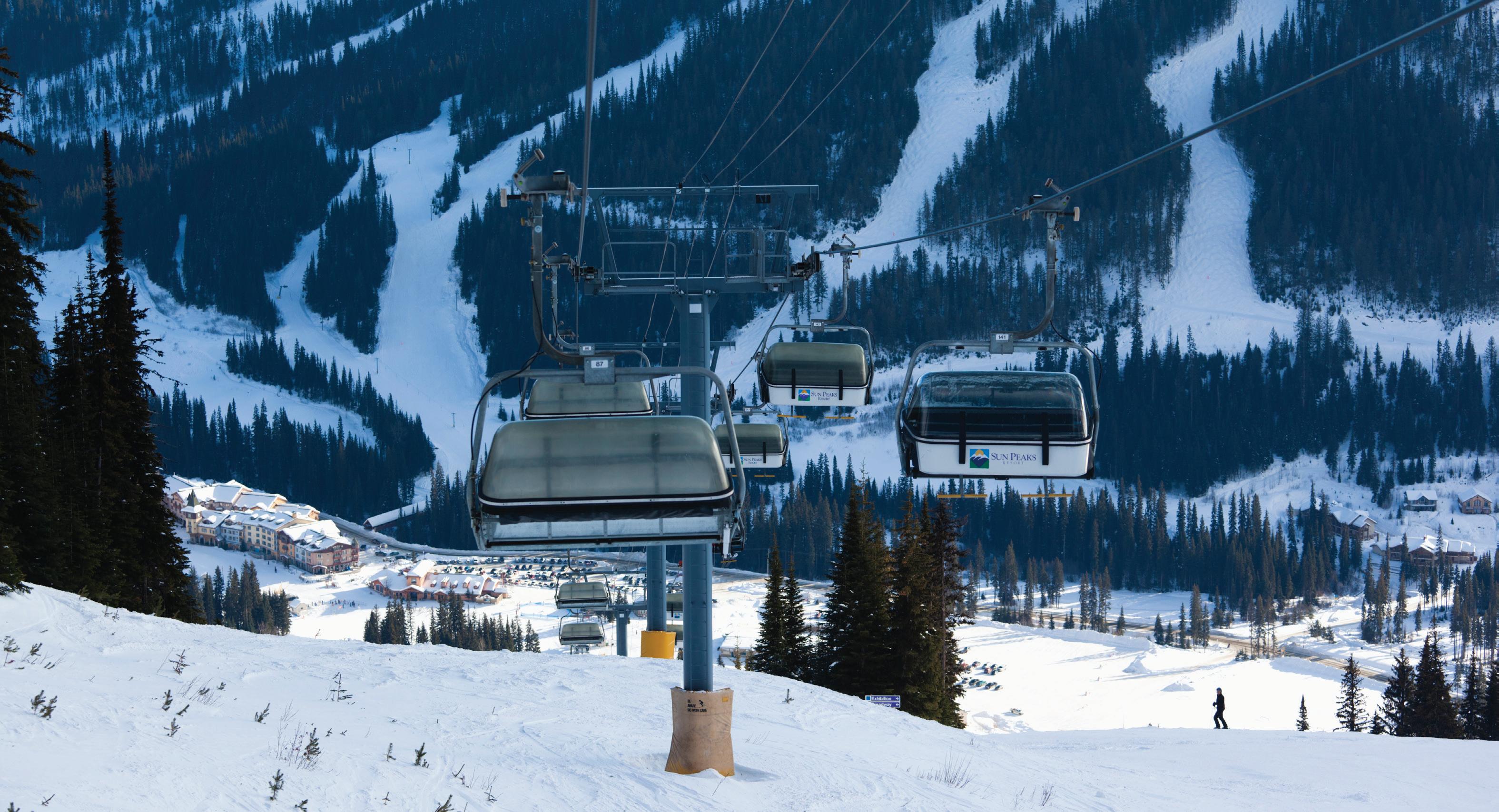
after it had been there for the taking. With the additional shock of skiing right onto a chair even on a weekend, we not only racked up a dozen runs by noon, but managed to make our way across all three sectors.
Catching cruisers with powder atop them can be life-changing, but cruising freshly groomed corduroy can also be transcendent to skiers at any level: a place for beginners to safely explore their pizza-wedges; for intermediates, a wide-open space to gain confidence; and for experts, a warm-up bonanza of speed and physics. Indeed, the G-forces pulled on good corduroy are enough to keep Einstein interested; there’s something about crossing the fall-line with your edges slicing velvety ridges, knowing that the quirky combo of speed, edging, and gravity will keep your body suspended only
back again and again. Marking Sun Peaks on their calendars for early season training is a habit for plenty of racers—both from around B.C. and abroad. Legendarily, Austria’s National Team signed a five-year deal in 2005 to exclusively train there in the lead-up to the 2010 Olympic Games. Whether they thought it would give them a feel for B.C. snow or just deliver groomed runs wide enough to set four Giant Slaloms side-by-each is hard to say. But it’s well-known that the team also loved the somewhat-isolated, self-contained nature of Sun Peaks, which delivered them from the public scrutiny of busier resorts.
Certainly, the snow-covered strollable base village has been likened to “a little bit of Europe” by more than one visitor, a comment that resonates with its boutiques and some 25 eating and drinking establishments featuring
If what’s underfoot is a big draw, then what lands atop in frequent dumps of 10 to 15 cm is pure bonus—not only the perfect cruiser topper, but the preferred refresher for gladed forests and off-piste terrain. And while roomy, consistent skiing remains a central draw, Sun Peaks offers all the other winter feels you’ve come to expect—from dog-sledding to horsedrawn sleigh rides, fat biking, ice-fishing, and snowshoeing. There’s also the chance to dip into ski history with Canadian Olympic doyenne Nancy Greene Raine, who lives here year-round and can be found on the slopes most days.
But I was only here to follow my early season powder-on-piste desires, so while French draft horses pulling excited families through the village snorted clouds into the cold air, I was just happy to know I could still count on Sun Peaks as one of the best places in Canada to chase that dream.
Leslie Anthony is a Whistler-based author, editor, biologist and bon vivant who has never met a mountain he didn’t like. ■

[W]e not only racked up a dozen runs by noon, but managed to make our way across all three sectors.SNEAK PEAK Powderhounds can take comfort knowing the dream is alive at Sun Peaks Resort.

Combining academic research with Indigenous knowledge, the Canadian Mountain Assessment will change how we understand our mountains

ountains loom large over the Canadian psyche. About a quarter of our expansive nation is covered by mountainous terrain, and while just 1.3 million Canadians can officially say they live in a mountainous area, roughly 75 per cent of our population resides within 100 kilometres of mountains.
But it’s not just geography that connects us to the mountains. Many of us are linked to the mountains as sources of fresh water and places to recreate and immerse ourselves in nature. As Whistlerites can attest, the mountains also serve a deeper, essentially spiritual purpose, a physical reminder of our relatively brief time on this planet and the greater forces working beyond us.
Canada’s Indigenous mountain dwellers have understood this dynamic for generations, and yet, much of the country’s understanding of our mountain landscapes has relied primarily on the sterile, scientific research of geologists, ecologists, glaciologists and the like.
This can be chalked up, at least in part, to the rigidity of academia, rooted in a colonial mindset that historically favoured disciplinary-dominant research, largely viewing Indigenous forms of knowledge through an anthropological lens, rather than being complimentary to the work scientists were already doing.
“Traditional and Western knowledge systems have important similarities: they both rely on observation, experimentation, pattern recognition, skepticism of second and thirdhand sources, creativity and intuition,” writes Olga Lauter, PhD candidate in anthropology at the School of Advanced Studies in the Social Sciences in Paris.
That’s what makes a unique initiative launched in 2020 to advance the understanding of Canadian mountain systems so significant. Based at the University of Calgary and funded by the Canadian Mountain Network and the Natural Sciences and Engineering Research Council of Canada, the Canadian Mountain Assessment (CMA) is a groundbreaking analysis of our mountainous landscapes based on extensive review of pertinent academic literature, combined with insights from First Nations, Métis, and Inuit knowledge of the mountains.
“The CMA is clarifying what we know, do not know, and need to know about Canada’s diverse and rapidly changing mountain systems,” writes Dr. Graham McDowell, project leader and two-time Intergovernmental Panel on Climate Change author.
McDowell, writing in the Alpine Club of Canada’s 2022 State of the Mountains report, called the distinct approach blending insights from approximately 3,000 peer-reviewed articles with Indigenous knowledge “a first for a mountain-focused assessment.”
“It’s about time,” says Tim Patterson, alpine guide and an Indigenous author of the CMA hailing from the Lower Nicola Indian Band. “It’s taken a while for academia to get to a place that they recognize knowledge is knowledge and how it comes about is not necessarily the most important thing— it’s about actually utilizing it for mutually beneficial ends.”
The CMA’s methodology utilized a
multiple-evidence-based approach in which Indigenous and Western knowledge systems are “understood as generating different manifestations of valid and useful knowledge,” McDowell says.
The CMA’s approach treats these respective knowledge systems on their own terms, aiming to “respectfully braid multiple sources of evidence together.” Those sources of evidence will take varying forms, be they text, video recordings of conversations with First Nations, Métis and Inuit knowledge holders, as well as art, photography and maps.
The challenge, according to Patterson, will be to ensure these varying forms of Indigenous knowledge aren’t separated from their most crucial context.
“I think where it could become problematic is if it’s taken out of context because our knowledge
is embedded in places and you have to move through that environment to understand what is going on and without that, it’s hard to put that knowledge into practice,” he said.
Guided by a Stewardship Circle made up of a team of Indigenous and non-Indigenous individuals, the CMA’s “spirit, intent, and approach” was co-developed by members, with a total of approximately 60 authors working collaboratively to “illustrate the depth and diversity of mountain-systems knowledge across Canada,” McDowell says.
Expected for release next fall as part of the Banff Centre Mountain Film and Book Festival, the CMA will be a book-length report broken into five main sections: Mountain Environments, Mountains as Homelands, Gifts of the Mountains, Mountains under Pressure, and Desirable Mountain Futures.

Launched in 2020 and planned as a three-anda-half-year project, the CMA was of course hampered by the COVID-19 pandemic which, until this spring, meant much of the core team’s activities remained online.
That changed in May when the CMA hosted two important in-person gatherings in Banff: a Learning Circle that included 20
First Nations, Métis and Inuit individuals hailing from mountain areas across Canada, and a meeting that brought 20 of the report’s authors together in a room for the first time.
At the latter, the authors discussed the CMA’s engagement with text and non-text materials; traceability and transparency; and the challenges, opportunities, and limitations of “knowledge co-creation activities” in the context of the final report.
“The gathering helped to solidify mechanisms for operationalizing key ideas and aspirations and generated considerable momentum for the final push of CMA preparation activities,” McDowell writes.
Not discounting the important theoretical work done at the CMA authors’ meeting, May’s Learning Circle showed the true power of the project’s distinct approach. Opening with words from Stoney Nakoda and Blackfoot
elders, the group spent several days in conversation about mountain environments, their many gifts, the notion of homelands, as well as the characteristics of “desirable mountain futures” and the many pressures bearing down on our mountain systems.
“Knowledge holders participating in the Learning Circle shared incredibly powerful, illuminating, and specific stories and knowledges about mountains,” McDowell writes.
Patterson was in attendance at the Banff Learning Circle, and said it was fascinating to see the different relationship the diverse group of Indigenous leaders had with the mountains compared to the more academicminded researchers.

“It’s not that they’re different, it’s that we talk about [mountains] in different ways,” he says. “I think that was the biggest takeaway: academics look at mountains from a distance, and Indigenous people and others like guides and those who live in the mountains are actually living as part of them. Bringing those two views together was important to get a whole picture.”
The sessions were recorded on video as a way to capture and share these orally transmitted stories and are now being woven into the different sections of the CMA (as hyperlinks) under the guidance and review of Learning Circle participants. Notably, these contributions can be removed from the final assessment at any time under the discretion of participants.
At this point, we will have to wait until the report’s release next fall to absorb the information and insights gained from the CMA’s ambitious research, but one thing is clear: it is sure to change not only how we understand Canada’s mountains, but how we study them into the future.
According to the CMA’s own project overview, “This transdisciplinary initiative is catalyzing a community of practice related to mountains in Canada and is expected to set the mountain research agenda for Canada for the coming decade.”

University of British Columbia environment and sustainability professor Lael Parrott, who is also one of the editors of the State of the Mountains report, believes the CMA is a prime example of a wider trend in academia.
“There is a general effort on the part of scientists, especially people working in natural sciences and ecology, for example, to really include and weave in Indigenous knowledge and sciences and putting them on the same level of importance,” she said.
To learn more, visit canadianmountainnetwork.ca. ■











Caitlin Nash and Natalie Corless walked into a World Cup doubles luge race on Dec. 14, 2019 pumping themselves up with that simple rhetorical question. After all, they had little to lose that day in Whistler. They were by far the youngest athletes in the field at 16 years old. No one expected them to get anywhere near the top 10. Nash and Corless were there to compete, to gain experience and to show others that they belonged.
And so, three years shy of legal drinking age in B.C., they rocketed down a historic Olympic track in contention against worldclass men.
Women’s doubles luge did not exist at the senior level back then. Nash and Corless finished 22nd out of 23 sleds, 2.7 seconds back of German winners Toni Eggert and Sascha Benecken (who at that point were the defending Olympic bronze medallists). Such details are insignificant.
What mattered is that Nash and Corless became the first women ever to race doubles luge in an FIL World Cup event.

On Dec. 10, 2022, the trailblazers returned to their home track stronger, faster and more experienced in every way. Again they made history by taking part in the first-ever World Cup women’s doubles race at the Whistler Sliding Centre (WSC).
“It’s very incredible to see what we’ve achieved as an international sport federation in only three short years,” Nash said. “Natalie and I are both super proud to have played a small part in the development of the sport, and we’re excited that we get to finally compete in a category of our own.”
“The race here in 2019 was a once-ina-lifetime experience,” Corless added. “I’m really glad that we had the opportunity to help luge take that step forward.”
Their teammates have their backs all the way.
Snith retired, the torch now falls to a new generation to bring Luge Canada into the future. They’re off to a flying start, so far.
Nash and Corless both started their luge journeys early. At eight years of age, Nash visited a recruitment camp with her father and took her first run on a sled. She took seven more that day, and there was no going back.
Not long after, 10-year-old Corless took her first ride at summer camp in Calgary,
finishing 16th in Beijing as she joined Ellis and Makena Hodgson to represent Canadian women on the sport’s biggest stage.
Luge is the only sliding sport where athletes are timed down to thousandths of a second. It demands immense technical skill and finely tuned reflexes to avoid the potential run-ending mistake that lurks around every corner. Doubles luge presents a unique challenge on top of that, where those minute technical movements must be performed in close unison and proximity with a teammate on a sled that features not one inch of unused space.
Nash and Corless have switched between both throughout their careers, often in the same season, month or even day. Both the technical adjustment between disciplines and the mental adjustment of racing against your teammate can be hard, but the Whistlerites feel that such experiences have made their already tight-knit bond even stronger.
“Having that internal competition between us definitely helped us become the best athletes we can be,” said Nash.
“I feel like it’s a really full-circle moment for them with the World Cup back here now, racing in their own category,” said 2022 Canadian Olympian Trinity Ellis, of Pemberton. “And I love it. I love seeing all the women’s doubles teams now. It’s so cool.”
Calgarian lugers Devin Wardrope and Cole Zajanski likewise appreciate the importance of women’s doubles to the sport as a whole.
“It’s spectacular,” Wardrope remarked. “I mean, women’s doubles has been something that’s been up and coming and we’ve been cheering it along the entire way.”
With older Canadian icons like Alex Gough, Sam Edney, Tristan Walker and Justin
Alta. She moved to Whistler with her family for reasons unrelated to luge, but soon met Nash around the track. The pair “hit it off right away.”
A year after their groundbreaking World Cup race, Nash and Corless returned to the WSC to place first in the 2020 Youth Canadian Championships as a doubles team. Both are also experienced singles racers, with Nash finishing second and Corless third as individuals that weekend.
In fact, the pair took a hiatus from doubles competition last year to focus on singles and maximize their odds of qualifying for the 2022 Winter Olympics. Corless did just that,
“We went to school together for years, we’ve spent every single day together pretty much, so we are definitely very close, and it definitely shows on the sled,” added Corless.
The young Whistler athletes have a golden opportunity to hone their craft over the next four years. They intend to build upon the foundation laid by Walker and Snith, who in 2018 helped Canada win its landmark Olympic team relay silver. Nash and Corless intend to appreciate the process too, realizing that sometimes you just need to “lay back and enjoy the ride” instead of obsessing over
HISTORY MAKERS Caitlin Nash (left) and Natalie Corless became the first women to race doubles luge in an FIL World Cup event this month. PHOTO COURTESY OF LUGE CANADA“It’s very incredible to see what we’ve achieved as an international sport federation in only three short years.”
-CAITLIN NASH
FOR 12 YEARS, the Whistler Sliding Centre (WSC) has been the backdrop of world-class luge races featuring top athletes from around the globe, and the latest stop on the FIL World Cup circuit was no exception. One hundred competitors from 20 nations tore up Whistler’s iconic track on Dec. 9 and 10 in five events: men’s and women’s singles, men’s doubles, the always-exciting team relay and—for the first time ever—women’s doubles.
Devin Wardrope and Cole Zajanski paced Team Canada with a career-best fourth-place result in men’s doubles. The young Calgarians went head-to-head with titans of their sport, like defending Olympic champions Tobias Wendl and Tobias Arlt and incumbent Olympic silver medallists Toni Eggert and Sascha Benecken (all from Germany). Wardrope and Zajanski’s two-run time of 1:16.763 left them just 0.023
thousandths of a second.

seconds off the podium.
Fourth place is often unsatisfying, but Wardrope and Zajanski are proud of how they acquitted themselves on a track they know all too well.
“It’s amazing. [This result] says we are in a good spot and being the first World Cup of the year, I couldn’t be happier,” said the 20-yearold Wardrope. “And to be in front of friends and family on a home track, it doesn’t get any better than that.”
The pair invested a lot of time in sliding on the WSC track, “so it is just nice to have it finally pay off,” added Zajanski, 21. “There’s a few lines in the track that other people were having difficulties with, and we had it nailed from top to bottom.”
Eggert and Benecken bested their German teammates Wendl and Arlt, standing atop the podium with a time of 1:16.554. The incumbent Olympic gold medallists settled for silver
FROM PAGE 48
They could very well become Canada’s premier women’s doubles team by 2026 when the discipline makes its Olympic debut. They could even join Walker and Snith as the only Canadian doubles lugers to bring home Olympic hardware.
Why not?

While Ellis is behind her doubles compatriots, she’s also on a mission of her own.
After placing 14th in her inaugural Olympic Games this February, the Pemberton native aspires to become a perennial top-10 finisher on the World Cup circuit en route to what hopefully are her second Games in 2026. Ellis admitted on Instagram to feeling ambivalent in the immediate aftermath of Beijing, having wanted to give more of herself on Olympic ice.
Nine months later, it still hasn’t quite sunk in.
“I don’t know if it’ll ever really sink in,” she admitted. “It took me a long time to feel like I had kind of processed it, but I am really proud of what I did in Beijing. Dealing with COVID and everything in China was very stressful, but overall, it was just an amazing experience. I can’t complain.”
Ellis made sure to give herself a breather after Beijing, taking a “local vacation” earlier this year with friends and family. She skipped her usual summer training in Calgary, instead going for practice runs at the WSC to stay close to home. The self-care paid off: now she feels rejuvenated and ready to race again.
Ellis fell in love with luge when she was young, much like her peers. Her mom signed her up for a run in Whistler during a Grade 6 field trip with Signal Hill Elementary School. Ellis grew up skiing, biking and playing soccer, but for her, nothing matched the speed and adrenaline of sliding.
Ellis was all in. She spent two years on Canada’s NextGen luge squad as a teenager, gaining experience and confidence on the Youth World Cup. Her development turned heads, and midway through the 2019 season she found herself on the senior World Cup circuit alongside national team athletes like Brooke Apshkrum and Carolyn Maxwell.
Nowadays, at 20 years old, Ellis is viewed as a leader of Luge Canada’s present generation.

“It’s kind of crazy to think about,” she said with a laugh. “I feel like I’m still so young on the circuit, but at the same time, I’ve now been on the World Cup circuit for almost four years, which kind of makes me feel like time is flying by.
“It’s exciting for me to look at this team we have. Everyone’s really young and excited and trying their best.”
The friendships among today’s Canadian lugers are obvious even to outsiders— particularly when it comes to the trio out of Whistler and Pemberton. They’ve raced against each other before, but at the end of the day, they share genuine camaraderie.
“Trinity is part of our little Whistler trio that we’ve got going,” said Nash. “Her success only motivates us to work harder. We want to succeed as a group and as a team.” n


The camp included two full days of skiing, where athletes worked in smaller groups with an emphasis on improving technique and fitness Athletes worked through various drills to target different areas of skill development The weekend culminated in a team sprint relay event with the younger kids paired up with the older athletes All the athletes worked really hard to push themselves for the for relay and their determination was impressive
The Whistler Nordics welcomed 51 athletes to the community Dec 2nd-4th for a Teck Regional Snow Camp The Camp saw athletes from throughout the Sea to Sky region in attendance, in addition to coaches from Spud Valley Nordics, Hollyburn Ski club and Whistler Nordics.
The goal of this camp was to get in some early season skiing and focus on improving technique, for both skate and classic skiing, as well as building connections and having fun With cloudless skies and cool temperatures, Whistler Olympic Park provided excellent skiing conditions The cool temperatures provided ideal conditions for classic skiing and the sunny skies gave everyone lots of energy throughout the weekend
Skiers and coaches stayed at the Whistler Athletes Centre and had access to the meeting space at the High-Performance Centre for evening activities Saturday evening included a movie night, with a big screen, to allow the athletes to have some fun outside of skiing The food during the camp was catered by Whistler Food Co and the everyone enjoyed healthy meals to fillup on energy, including two hot lunches up at WOP
The Whistler
in 1:16.605, and Austrian duo Juri Gatt and Ricardo Schopf took bronze in 1:16.740.
Wardrope and Zajanski’s performance represents a true changing of the guard, as Canadian luge stalwarts Tristan Walker and Justin Snith slid into retirement by forerunning the men’s doubles race on Saturday. Walker and Snith are known for helping Team Canada win its landmark mixed team relay silver at PyeongChang 2018, just the second Olympic medal that Canadian lugers have ever achieved.
“They have been great mentors for us when we were coming up, first starting doubles. They were the ones we could base stuff off and give us advice,” said Wardrope. “They are definitely going to be on speed dial [throughout our career].”
Wardrope and Zajanski, who were 13th in their first World Cup start in Altenberg, Germany two years ago, and eighth at a World Cup on Beijing’s Olympic track last season, gave Walker and Snith all they could handle in earning the lone Canadian doubles spot at the 2022 Olympics.

“It’s time to hand things over to the young guys. It feels so nice that we were able to do one last season with those boys,” said Walker after his farewell run. “They have really impressed us, and there were a couple of times last year we thought it may have been them doing the Olympic race for Canada [this year].
“We are super proud of them, and I feel like we are leaving the program in good hands with them.”
Meanwhile, Whistlerites Caitlin Nash and Natalie Corless placed sixth in just the second women’s doubles race in FIL World Cup history. Three years after becoming the first female athletes to compete in doubles at the senior level (against men), they are now the first to represent Canada in women’s doubles.
“We were hoping for a podium finish today, but we laid down the two best runs we had, and we are coming away from this very happy,” said Nash, who finished in a time of 1:18.526 with her longtime friend.
The Italian team of Andrea Votter and Marion Oberhofer (1:17.912) won the second women’s doubles World Cup gold ever awarded. Austrian pair Selina Egle and Lara Kipp seized silver (1:17.953), while Germany’s Jessica Degenhardt and Cheyenne Rosenthal raced to bronze (1:17.968).
Nash and Corless plan to leave no stone unturned in pursuit of their lofty aspirations over the next four years, but they also know that the true victory is female athletes getting their own doubles event at last.

“It’s really inspiring. Women’s doubles have already inspired so many new athletes to join and [it] has brought a lot of attention to luge as well,” said Corless. “I’m really hoping this is going to help develop the sport in the next quadrennial.”
Trinity Ellis was the top Canadian in women’s singles, finishing 13th in a combined time of 1:17:656. The Pemberton native had her fastest start of the week with steady driving down the WSC track for a solid start to the new campaign.
“Both runs were pretty good,” said Ellis, 20. “I’m happy with them, and that is what my goal was today. It feels so great to be back racing at home. It has been so long since we were last here.
“There [were] so many people here watching that had never gotten to see me slide before, so that’s pretty exciting.”

Two-time Olympic medallist Madeline Egle pulled off the improbable: defeat Germany in a sliding event. The Austrian grabbed gold by clocking in at 1:17:137, forcing German contender Julia Taubitz into the silver medal spot at 1:17:160. Another German, Merle Frabel, won bronze in 1:17.182.

Three other Canadian women dropped into the track for singles. 22-year-old Carolyn Maxwell of Calgary, Alta. placed 15th (1:17.682), while Nash was right behind her in 16th (1:17:728) and Corless finished 18th (1:17.817).

With two-time Whistler Olympian Reid Watts taking a break from luge, Canada had no horse in the men’s singles race and was also unable to field a relay team. n














EVEN BY THE STANDARDS of India’s eclectic regional cuisine, the food of Goa stands out.
A small state on India’s west coast, Goan history is characterized by the confluence of different cultures that have touched the area over generations, all of which have influenced the vibrant cuisine there in ways big and small.
One of the more prominent of those influences came from the four centuries Goa spent as a Portuguese colony, which introduced new ingredients such as potatoes, chilies, tomatoes, cashews, vinegar and various kinds of meat. The religious makeup of the region, with significant Hindu, Muslim and Christian communities, has also contributed to the distinct and vibrant cuisine, while the many ports dotting the coastal region have brought with them their own regional flourishes.
It’s from this rich foundation that Four Seasons Whistler Executive Chef and Goa
native Sajish Kumar Das cut his teeth. He still remembers going out as a child to see the prodigious haul of seafood the Konkan fishermen brought back with them.
“When I was small, I would go to see the fishermen when they would bring their boat and used to catch a lot of fish and lobster for
India, so there’s a lot of seafood, a lot of fresh ingredients and I found the same fresh seafood in B.C.,” he explained. “I thought this would be a good twist between the fresh seafood we get here and the flavours of Goa.”
Among the options for starters, Kumar Das has crafted a dish of oven-roasted king

traditional green spice paste—with garlic chili oil and microgreens.
“It’s nice and crispy and uses a little bit of heat,” Kumar Das said.
us to cook in the house,” he recalled. “That is one of my favourite memories that I have, making stews and sauces out of it.”
Now, Kumar Das is channelling his home through a new pop-up restaurant at the Four Seasons, appropriately called G.O.A. He said he was inspired to develop the concept after noticing similarities between the ingredients of his native land and his adopted Canadian home.
“Goa is basically a West Coast region of
prawns served with a squid-ink rice crisp, shaved garlic, and sweet and sour balchao sauce, a spicy, vinegary blend; as well as what he is calling “Soup From the Sea,” a fragrant tomato broth made with rasam spice mix chock full of clams, mussels and prawns; and a seared octopus appetizer served with oniontomato masala, turmeric-scented potato and fried chilies; and a personal favourite of Kumar Das’: a crispy pork belly, brined in dark rum, and topped in a cafreal emulsion—a
G.O.A.’s main courses hew even more to the Portuguese-Indian style, with dishes such as a seared lamb rack served in a spicy vindaloo sauce with cilantro oil, and a veal shank prepared with semi-dried masala, curry leaf and dried chili. Kumar Das also lends his take to Goa’s ubiquitous fish curry with a lavish lobster coconut curry served with poached okra, while the duck dosa wraps the popular thin pancake in a rich duck curry masala and a fried egg. Seafood lovers can also get their fix with a B.C. sable fish fried in the traditional tawa—a large, round pan— with Indian spices, mussels and clams molee, a rich Kerala-style curry, or a creamy seafood rice served with a selection of B.C. seafood, topped with spiced pork crumble and saffron. Vegetarians can indulge in a mushroom korma, made from a silky cashew gravy and morel dust.
Goa also serves as the inspiration for the cocktail menu, including The Goan Twist, a rum-based drink with clarified tamarind mix, lime and chaat masala; and Mumbay Affair, made from gin, lychee, lime, rose and water.
G.O.A. is open daily from 5 to 9 p.m. through Jan. 8, 2023. Learn more at fourseasons.com/ whistler/dining/restaurants/goa. n
GOURMET GOA The Four Seasons Whistler’s Goan-inspired pop-up restaurant is open now through Jan. 8. PHOTO SUBMITTED“I thought this would be a good twist between the fresh seafood we get here and the flavours of Goa.”
- SAJISH KUMAR DAS














 BY ALYSSA NOEL
BY ALYSSA NOEL
WHEN ANDREA MUELLER first moved to Whistler two decades ago, she worked above Chili Thom’s Creation Station, a creative studio space in Function Junction.
Fresh out of the Ontario College of Art and Design, watching the (late) beloved local talent make a living out of art had a profound impact on her.
“It was the first time I had seen someone living as an artist, being themselves as a ‘crazy artist’ and actually living that lifestyle, making money from that,” Mueller says. “It was a very big influence for me to see him doing that and, to be really honest, it was one of the things that inspired me to keep going with art.”
While she doesn’t necessarily feel it, Mueller—voted Whistler’s favourite artist in Pique’s Best of Whistler more than once— has since transitioned from emerging to established artist in the local scene.
Now, with a new bright, bold popup studio/workshop/store installed in Creekside for the next six months, she hopes to influence the incoming generation of young artists as well.
“I want to show other young people that
might be thinking, ‘I can’t do [this],’ you can. You have to work for it, but you can do it,” she says.
ART POP—an admittedly less selfpromotional but more fun name than the Andrea Mueller Gallery—officially opened its doors on Dec. 1 at 321-2063 Lake Placid Rd.
It has a space for workshops—like Mueller’s paint nights and kids’ classes as well as events hosted by other local artists and artisans—and a
She also put a lot of planning into creating a colourful, unique, whimsical space.
“It has bright, fun, weird elements to it. I wanted to do something that’s opposite to what’s been happening decor-wise lately. There’s been a lot of neutrality in home decor and now people are frightened of colour,” she says. “I wanted to make a space I feel happy in, whether I’m making something that’s happy or not in terms of
enough to be worth the risk, but long enough to settle into something cool.
The unconventional setup is something Whistler could use more of, she says.
“We’re so afraid in society to let people do things,” Mueller says. “So many people have these awesome track records, they’re invested in the community, and have a great reputation. But they don’t have insane family backing of money. They’re not wealthy
studio space, on top of a retail section filled with art and merch, hers and others, like House of Commune clothing, hats by the Madhatress and jewelry by Birds and Bees, to name a few.
Mueller’s new craft kits for kids and families will also be for sale.
“The whole retail area, that’s something that was surprising to people,” she adds. “It’s 100-per-cent a really good-looking store. It’s not a messy, creative space.”
my own artwork. I’m creating something that has a vibrant, exciting energy to it. When I go there, I feel happy.”
The space marks Mueller’s second studio in Creekside. Back in 2019 she was working in a temporary spot and got to know employees who work for the owners of the Creekside retail space.
When another shop came up for a sixmonth lease, she decided it was just short
people. It doesn’t mean they’re trying less or have bad ideas. I think there should be a municipal program where empty spaces are used by reputable people to pop up for six months or a year … If we’re going to promote local and encourage our local economy, that’s a great way to give people an opportunity they wouldn’t otherwise have.”
For more, visit andrealikesart.com/pages/ art-pop. n
ONE POP SHOP Whistler painter Andrea Mueller’s new pop-up studio and retail space is now open in Creekside. PHOTO SUBMITTED“So many people have these awesome track records, they’re invested in the community, and have a great reputation. But they don’t have insane family backing of money. They’re not wealthy people. It doesn’t mean they’re trying less or have bad ideas. I think there should be a municipal program where empty spaces are used by reputable people to pop up for six months or a year.”
- ANDREA MUELLER
LOCAL IMPROV TROUPE STAGES TWO HOLIDAY SHOWS ON DEC. 22 AND 29
BY ALYSSA NOELWHAT, EXACTLY, is Laugh Out LIVE!?


According to its tagline, there’s a little something for practically everyone.





Think “Saturday Night Live meets Whose Line Is It Anyway? meets The Price is Right meets your granny’s ’70s porn collection.” What more could you ask for?
“This December show feels like it’s going to be the best one we’ve ever done,” says Ira Pettle, who runs the comedy troupe alongside Dave Francis and Rebecca Mason. “As soon as our November Cornucopia show ended, the next day, Dave, Rebecca and I got together and we actually came up with the plan for December, which is something we had never done before.”
Now in its second season, the show is a mix of improv, stand-up comedy, sketch comedy, and even game shows. For its holiday installation—dubbed Resting Grinch Face: A Wintersphere Comedy Event—there’s plenty of content that offers a wink at local audience members, but visitors will gain some insight into life in the resort too.
“I think visitors could really enjoy that we do have such a loving local audience base that go to our shows,” Mason says. “We do perform content that locals enjoy, but the tourists will be in on it as well and get to know what it’s like to go to a show full of locals and what we talk about and what makes the locals laugh. That adds depth to the experience for visitors.”
With one “sneak preview” under their belt at the Whistler Racket Club on Dec. 14, the group is looking ahead to its two marquee shows at the Whistler Conference Centre.

The first will take place on Thursday, Dec. 22 and the other is set for Dec. 29. They will feature local guest actors Julie Farr and
Brandon Barrett (also a Pique writer and editor), alongside featured stand-up comic Brandon Smith.
(Be prepared for another special cameo appearance featuring someone familiar to most Whistlerites.)
“The whole vibe of Laugh Out LIVE! has always been a comedy variety show,” says Francis. “We have a lot of different sections. We have stand-up, sketch, and improv and gameshow giveaways. We have video segments. We’ve tried to keep it pretty fastpaced, like five minutes per bit.”
For the actors, part of the appeal is the connection the show fosters with its audience.

“What I really love about Laugh Out LIVE! versus doing a play or something is the audience, because we are always interacting. Improv, by its nature, requires audience engagement, right? Then we have game shows where we bring people up and it really feels like the audience is another member of the troupe. I think that is the huge difference between a more theatrical presentation and, for me anyway, it’s one of the most fun parts about it,” says Barrett.
Looking ahead to the new year, the troupe hopes to stage fresh, new shows regularly at different venues around Whistler.
“We’re touring the show around and because of that, we don’t necessarily know where we’re going to be,” Mason says. “We’re hoping to do at least one show a month and maybe there will be some preview shows and satellite shows that we do around town. The best way to figure out where we’re going to be next—because sometimes we don’t even know that—is to stay in contact with us.”
You can do that on Facebook by searching Laugh Out LIVE.




Tickets for the upcoming show, meanwhile, are $28.41 at showpass.com/ laugh-out-live. n



 MERRY GRINCH-MAS Laugh Out LIVE! returns after its sold-out inaugural season to the Whistler Conference Centre on Dec. 22 and 29. Pictured are troupe founders Rebecca Mason, left, Dave Francis, centre, and Ira Pettle.
MERRY GRINCH-MAS Laugh Out LIVE! returns after its sold-out inaugural season to the Whistler Conference Centre on Dec. 22 and 29. Pictured are troupe founders Rebecca Mason, left, Dave Francis, centre, and Ira Pettle.



> Dec. 17. Early show: 2:30 p.m.; late show: 6:30 p.m. > Maury Young Arts Centre
After its sold-out debut season and rave reviews, Laugh Out LIVE! is back with a brand new December holiday show: Resting Grinch Face!
A not-to-be-missed Whistler experience, this smorgasbord of improv, stand-up, and sketch comedy paired with huge prize giveaways and special guests won’t disappoint, though it may have you questioning your overall life choices. Think Saturday Night Live meets Whose Line Is It Anyway?, meets The Price Is Right, meets Kids In the Hall!
> Dec. 22 and 29, 8 p.m.

> Whistler Conference Centre
> $25


Join one of Whistler’s rising stars in celebrating the official release of his record, which is sure to make a big splash across multi-generational audiences.

Ira Pettle is an entertainer, arts educator, and creative now launching his career as a singer/songwriter. His debut record, A Little Bit, fulfils a long-awaited dream to put his love of storytelling into song.
> Dec. 30, 6:30 p.m.

> Whistler Conference Centre















> Free


The Museum’s Permanent Collection celebrates artistic difference in BC from the late 18th century to the present. Now Open Thursdays to Mondays



THE SMELL OF FRESH doughnuts, french fries made from scratch, and fine dining on the mountaintop; baked goods (including those giant cookies), sandwiches and hot food worth freezing for—Blackcomb Mountain took on-mountain dining in the 1980s and stepped it up a notch.
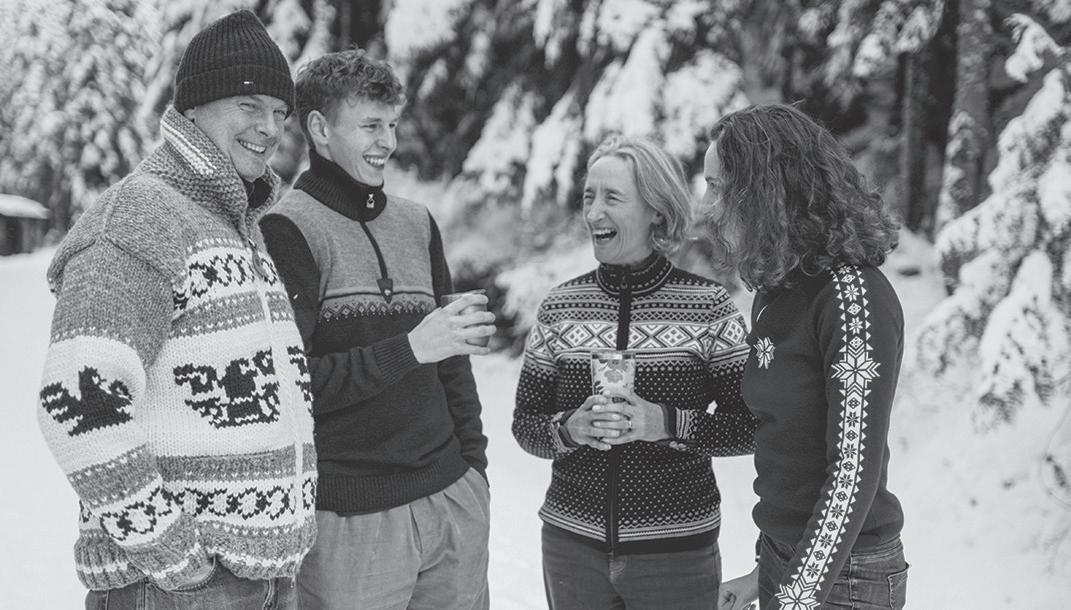

When it opened in 1980, Blackcomb had a real focus on hospitality, making guests comfortable to encourage return visits. Before Merlin’s or Crystal or Glacier Lodge, you may remember dining at the cafeteria at Base II, the original base of Blackcomb, or the Rendezvous Lodge.

The Parsons family were the first concessionaires on Blackcomb, opening these venues in conjunction with the new mountain. Chris Leighton (née Parsons), her brother Steve, and their mom Lee were the brains and brawn behind the impressive operation. The Parsons family had the food business in their blood. In 1929, Chris’ grandfather had opened Jimmy’s Lunch at the PNE, which is still run by the family to this day. Christine’s father, Bob Parsons, also had a food stall that travelled the carnival circuit every year from May to October. He would be on the road all summer, then could spend the winter in the mountains, skiing with family and volunteering with Whistler Mountain Ski Club. Sadly, Bob passed away in 1979, one year before his family opened the food services on Blackcomb.
When the cafeteria and Rendezvous opened, the cafeteria had a large preparation space, and much of the food was made at the base and then transported up the mountain either by snowcat or by foot based on the amount of snow at the base. Unfortunately for Blackcomb, the first year of operation was a terrible snow year. There were three lifts to get up the mountain, and they did not line up perfectly, so food and supplies had to be skied from one lift to the next until they reached the snowcat. Inevitably, food would spill along the way.
Once there was enough snow, success was still not a given. Visitor numbers would come in at 11 a.m., and when there was not a single guest on the mountain, the food
services closed for the day.
According to Chris, the direction from Aspen Corp. and Hugh Smythe was, “‘We don’t want to be like Whistler [Mountain]. We want to be better.’ Hugh would come through every day and make sure the music wasn’t too loud and … it was expected that we were going to be bigger and better.”
When Blackcomb opened, there were caretakers that lived at the top who were responsible for starting the doughnuts and fresh baking so wonderful smells welcomed the guests. The caretakers also put soups and chili on to heat, because regular staff could only upload 30 minutes before the mountain opened to the public.
While it is common to find vegetarian options on most menus today, in the 1980s it was quite unusual to have the choice of vegetarian or beef chili, which Blackcomb offered. Food was served on real crockery with real cutlery. They even flew a “fry guy” over from England to train everyone in how to make french fries from scratch using a chipper.
The food up Blackcomb during the Parsons’ reign is still raved about today. They went on to open Christine’s Restaurant, fine dining on top of the mountain named after Chris herself (much to her chagrin; Chris thought Wildflower or Lupin were better names, but Smythe was adamant). Horstman Hut, Crystal Hut and Merlin’s were also opened during their time as concessionaires. After 10 years, and growing the staff from a daily requirement of 10 to about 100, the Parsons decided it was time for their next adventure, and Blackcomb took over on-mountain food operations.














School Registration for the 2023/2024 School Year Opens January 17th-20th, 2023
Kindergarten, French Immersion Programs, and All New Students to the District
School District No.48 (SD48) is welcoming registrations for the upcoming 2023-2024 school year starting January 17th, 2023, at 8:00 am and ending January 20th, 2023, at 4:00 pm.
There will be two key steps:
Step One: Parents and Guardians will be asked to fill out an online webform through the school district website This will include basic contact information such as name, email address, physical address and student name and grade. Parents will be walked through the process within the webform to either register as a new student to the district, or a current student registering for French Immersion
Step Two: Make an appointment to complete your registration at your English catchment school by booking online through our district website, or by contacting the school directly.
Note - French Immersion registrations must be completed through your English catchment school, not the French catchment school. For Cultural Journeys and Learning Expeditions, complete your registration directly at St'a7mes School.
Please Note the Following Important Information:
The order in which registrations and/or transfer requests are received have implications for placement in a program or school where space and seats may be limited. A time and date stamp will be provided for your registration with the completion of the webform This time and date stamp will be valid for 10 business days and will be confirmed at the completion of your registration during your school appointment.
Parents and guardians who miss the availability of the webform can register by contacting their English catchment school to book an appointment The completion of the registration during this appointment will serve as the time and date stamp.
More detailed information on the registration process and SD48 program information can be found on our District Website: www.sd48seatosky.org or contact your English catchment school principal for further assistance. We encourage parents and guardians to register as soon as possible to help schools plan for September 2023.

ARIES (March 21-April 19): Aries painter Vincent van Gogh was renowned for translating his sublime and unruly passions into colours and shapes on canvas. It was a demanding task. He careened between torment and ecstasy. “I put my heart and soul into my work,” he said, “and I have lost my mind in the process.” That’s sad! But I have good news for you, Aries. In the coming months, you will have the potential to reach unprecedented new depths of zest as you put your heart and soul into your work and play. And hallelujah, you won’t lose your mind in the process! In fact, I suspect you will become more mentally healthy than you’ve been in a long time.
TAURUS (April 20-May 20): “The soul is silent,” writes Taurus poet Louise Glück. “If it speaks at all, it speaks in dreams.” I don’t agree with her in general, and I especially don’t agree with her in regard to your life in the coming weeks. I believe your soul will be singing, telling jokes, whispering in the dark, and flinging out unexpected observations. Your soul will be extra alive and alert and awake, tempting you to dance in the grocery store and fling out random praise and fantasize about having your own podcast. Don’t underestimate how vivacious your soul might be, Taurus. Give it permission to be as fun and funny as it yearns to be.
GEMINI (May 21-June 20): The coming weeks will be an excellent time to expand your understanding about the nature of stress. Here are three study aids: 1. High stress levels are not healthy for your mind and body, but low to moderate stress can be good for you. 2. Low to moderate stress is even better for you if it involves dilemmas that you can ultimately solve. 3. There is a thing called “eustress,” which means beneficial stress. It arises from a challenge that evokes your vigour, resilience, and willpower. As you deal with it, you feel hopeful and hardy. It’s meaningful and interesting. I bring these ideas to your attention, dear Gemini, because you are primed to enjoy a rousing upgrade in your relationship with stress.
CANCER (June 21-July 22): Long before he launched his illustrious career, Cancerian inventor Buckminster Fuller was accepted to enrol at Harvard University. Studying at such a prestigious educational institution was a high honour and set him up for a bright future. Alas, he was expelled for partying too hard. Soon he was working at odd jobs. His fortunes dwindled, and he grew depressed. But at age 32, he had a pivotal mystical experience. He seemed to be immersed in a globe of white light hovering above the ground. A disembodied voice spoke, telling him he “belonged to the universe” and that he would fulfil his life purpose if he applied himself to serving “the highest advantage of others.” How would you like a Buckminster Fuller-style intervention, Cancerian? It’s available if you want it and ask for it.
LEO (July 23-Aug. 22): Leo-born Judith Love Cohen was an electrical engineer who worked on NASA’s Apollo space program. She was also the mother of the famous actor Jack Black. When she was nine months pregnant with Jack, on the day she went into labour, she performed a heroic service. On their way to the moon, the three astronauts aboard the Apollo 13 spacecraft had encountered a major systems failure. In the midst of her birth process, Judith Love Cohen carried out advanced troubleshooting that helped save their lives and bring their vehicle safely back to Earth. I don’t expect you to achieve such a monumental feat in the coming days, Leo. But I suspect you will be extra intrepid and even epic in your efforts. And your ability to magically multitask will be at a peak.
VIRGO (Aug. 23-Sept. 22): When you’re at the height of your powers, you provide the people in your life with high-quality help and support. And I believe you could perform this role even stronger in 2023. Here are some of the best benefits you can offer: 1. Assist your allies in extracting bright ideas from confusing mishmashes. 2. Help them cull fertile seeds from decaying dross. 3. As
they wander through messy abysses, aid them in finding where the redemption is. 4. Cheer on their successes with wit and charm.
LIBRA (Sept. 23-Oct. 22): A blogger named Daydreamydyke explains the art of bestowing soulful gifts. Don’t give people you care for generic consumer goods, she tells us. Instead, say to them, “I picked up this cool rock I found on the ground that reminded me of you,” or “I bought you this necklace for 50 cents at a yard sale because I thought you’d like it,” or “I’ve had this odd little treasure since childhood, but I feel like it could be of use to you or give you comfort, so I want you to have it.” That’s the spirit I hope you will adopt during the holiday season, Libra—as well as for all of 2023, which will be the year you could become a virtuoso gift-giver.
SCORPIO (Oct. 23-Nov. 21): In 1957, engineers Alfred Fielding and Marc Chavannes invented three-dimensional plastic wallpaper. No one bought the stuff, though. A few years later, they rebranded it as Bubble Wrap and marketed it as material to protect packages during shipment. Success! Its new use has been popular ever since. I suspect you are in a phase comparable to the time between when their plastic wallpaper flopped and before they dreamed up Bubble Wrap. Have faith in the possibility of there being a Second Act, Scorpio. Be alert for new applications of possibilities that didn’t quite make a splash the first time around.
SAGITTARIUS (Nov. 22-Dec. 21): I applaud your expansive curiosity. I admire your yearning to learn more and more about our mysterious world as you add to your understanding of how the game of life works. Your greed for interesting experiences is good greed! It is one of your most beautiful qualities. But now and then, there come times when you need to scale down your quest for fresh, raw truths and work on integrating what you have already absorbed. The coming weeks will be one of those times.
CAPRICORN (Dec. 22-Jan. 19): Better than most, you have a rich potential to attune yourself to the cyclical patterns of life. It’s your birthright to become skilled at discerning natural rhythms at work in the human comedy. Even more fortunately, Capricorn, you can be deeply comforted by this awareness. Educated by it. Motivated by it. I hope that in 2023, you will develop your capacity to the next level. The cosmic flow will be on your side as you strive to feel the cosmic flow—and place yourself in closer and closer alignment with it.
AQUARIUS (Jan. 20-Feb. 18): Anne, a character in a book by L. M. Montgomery, says she prefers the word “dusk” over “twilight” because it sounds so “velvety and shadowy.” She continues, “In daylight, I belong to the world . . . in the night to sleep and eternity. But in the dusk, I’m free from both and belong only to myself.” According to my astrological assessment, you Aquarians will go through a dusk-like phase in the coming weeks: a time when you will belong solely to yourself and any other creature you choose to join you in your velvety, shadowy emancipation.
PISCES (Feb. 19-March 20): My Piscean friend Venus told me, “We Pisceans feel everything very intensely, but alas, we do not possess the survival skills of a Scorpio or the enough-is-enough, self-protective mechanism of the Cancerians. We are the water sign most susceptible to being engulfed and flooded and overwhelmed.” I think Venus is somewhat correct in her assessment. But I also believe you Fishes have a potent asset that you may not fully appreciate or call on enough. Your ability to tune into the very deepest levels of emotion potentially provides you with access to a divine power source beyond your personality. If you allow it to give you all of its gifts, it will keep you shielded and safe and supported.
Homework: Make a prediction about the best thing that will happen in your life during 2023. Newsletter. FreeWillAstrology.com.
In addition to this column, Rob Brezsny creates EXPANDED
In-depth weekly forecasts designed to inspire and uplift you. To buy access, phone 1-888-499-4425. Once you’ve chosen the Block of Time you like, call 1-888-682-8777 to hear Rob’s forecasts. www.freewillastrology.com

RE-USE-IT CENTRE Donations daily 10 am to 4 pm Accepting pre-loved clothing, gear and household items. Shopping daily 10 am to 6 pm 8000 Nesters Road 604-932-1121

RE-BUILD-IT CENTRE Donations daily 10 am to 5 pm Accepting pre-loved furniture, tools and building supplies Shopping daily 10 am to 5 pm 1003 Lynham Road 604-932-1125


Visit mywcss.org and our social channels for updates.






RowingMachineConcept2 Concept2RowingMachineModelEcomputertracker-asnew-6years old-rarelyusedasIhaven’tbeento Whistlerfor5years-I’llbeinWhistler from7thJanuary2023foroneweekpickupthen-$500wyldke@gmail.com-KevinWyldSydneyAustralia-+61418891161 614-189-9116wyldke@gmail.com































































































Chief Operator – Wastewater Treatment Facility – Regular Full-Time
Truck Driver Class 3 – Night Shift - Temporary Full-Time Recreation Program Leader – Temporary Part-Time (20-30 hours)
Executive Assistant to the Chief Administrative Officer – Regular Full-Time Labourer 2 – Roads and Parks – Regular Full-Time Recreation Program Leader – Regular Part-Time (4-19 hours)
Assistant Chief Operator – Wastewater Treatment – Regular Full-Time Recreation Facility Attendant 2 – Casual/On-Call Recreation Facility Attendant 1 – Casual/On-Call
Financial Services Specialist – Temporary Full-Time Custodians – Casual/On-Call
squamish.ca/careers
The District of Squamish is seeking casual on-call Custodians to join our dynamic team! The ability to work independently and a strong safety mindset is essential.
We offer a competitive wage of $24.57 per hour, a flexible schedule and opportunities for development. This role is perfect for all ages especially if you have availability.
This position is casual on-call but can be busy, cleaning in a variety of District buildings.
Apply today by quoting competition number 22-05 and emailing jobs@squamish.ca
squamish.ca/careers

Looking to contribute to your local community? Consider a career in local government. Join the SLRD’s team of dedicated staff who work together to make a difference in the region. Headquartered in Pemberton, the Squamish-Lillooet Regional District (SLRD) delivers a wide range of regional, sub-regional and local services to its residents. The SLRD is a BC Regional District consisting of four member municipalities (Squamish, Whistler, Pemberton, Lillooet) and four electoral areas. Services include land use planning, solid waste management, building inspection, fire protection, emergency preparedness, 911 services, recreation, water and sewer utilities, regional transit, trails and open spaces as well as financial support for various community services.
The region contains some of the most spectacular forests, waterways, and mountains in the province and affords an endless range of opportunities for outdoor adventure, making it an exceptional place to live, work and play.
The SLRD is seeking an experienced leader to fill the position of Director of Environmental Services. Reporting to the Chief Administrative Officer (CAO), and as a member of the senior leadership team, the Director of Environmental Services is responsible for the strategic oversight of the SLRD’s services including water systems, sewer systems, solid waste management, street lighting systems, flood and debris flow structures, parks and trails development and services, building and facility management, and capital infrastructure projects for the electoral areas of the Regional District. This position is also responsible for short and long-term capital planning including asset management planning, dyking inspections, and bylaw and contract administration for the department.
The ideal candidate will have 7 years of recent related experience overseeing capital infrastructure projects, utilities, solid waste management, parks and trails, or facilities in a local government or corporate setting, and post secondary degree or diploma in Civil Engineering, Applied Science Technology or related discipline. For further information, please refer to the full job description at www.slrd.bc.ca/employment
Salary will be determined commensurate with experience. This position also offers a comprehensive benefits package, participation in the Municipal Pension Plan, a compressed work week (9-day fortnight) and flexible work from home opportunities.
Interested candidates are invited to submit their cover letter and resume (preferably in pdf format) by email to careers@slrd.bc.ca. This posting will remain open until filled, with application review commencing on January 3, 2023.
We sincerely thank all applicants for their interest, however, only those shortlisted will be contacted.

Be a part of the DHD team and their next exciting project – Finch Drive. A 20 acre, master-planned community using modern building technologies to achieve some of Squamish’s most energy efficient, multi-family homes. For more information about DHD, full job descriptions and how to apply, visit www.dhdev.ca
We are currently hiring the following positions for projects in WHISTLER.
We are currently hiring the following positions for projects in WHISTLER.


Journeymen Carpenters (5+ years) Skilled Labourers

Journeymen Carpenters (5+ years)
Skilled Labourers
We offer competitive pay, a benefits package, company cell phone plan, interesting projects, a collaborative team environment, and a chance to improve your existing skills.
We offer competitive pay, a benefits package, company cell phone plan, interesting projects, a collaborative team environment, and a chance to improve your existing skills.
We are looking for dedicated team players who want to join a rapidly growing company and establish a long-term career in construction.
We are looking for dedicated team players who want to join a rapidly growing company and establish a long-term career in construction.

Please forward your resume to Lea@gccltd.ca
Please forward your resume to Lea@gccltd.ca
At the Liquor Distribution Branch (LDB) our vision of ‘Service. Relationships. Results.’ is all about providing a valued service, building strong relationships with our stakeholders, and achieving greater results for the province.
The LDB is one of two branches of government responsible for the cannabis and liquor industry of B.C. We operate the wholesale distribution of beverage alcohol within the province, as well as the household retail brand of BC Liquor Stores.

We employ nearly 5,000 people in over 200 communities and have been named one of BC’s Top Employers 14 times over for offering exceptional places to work rooted in values of fairness and respect, work-life balance, and inclusion and diversity. We believe that our people are our greatest asset. Being a reputable employer with programs of skills training and professional development are what attract candidates to BC Liquor Stores, while our progressive, forward-thinking culture is why employees with a growth mindset thrive.
Auxiliary positions are on-call, meaning hours of work are not guaranteed and subject to availability. Some auxiliary employees may not initially work a full 35-hour week, but with more hours worked and more seniority gained, more opportunities for more hours of work will follow.
Auxiliary positions are not permanent full-time but can lead to permanent full-time opportunities with a very competitive total compensation package, including a comprehensive pension plan, medical and dental coverage (including massage and physiotherapy), tuition reimbursement and scholarship programs, and access to public service employee benefits including career support services, financial and legal services, and employee and family counselling.
We are dedicated to the highest quality of customer service, delivered with friendliness, individual pride, initiative, and retail passion! If you fit this description and you are prepared to work in a fast-paced environment, we encourage you to apply to become a part of the Whistler area BC Liquor Stores.
To be eligible, applicants must meet the following qualification requirements:
• Be at least 19 years of age

• Be able to legally work in Canada
• Be able to provide excellent customer service

• Be able to communicate effectively and professionally with the public


• Be able to demonstrate aptitude for cashier and related duties, including calculations


• Be able to perform physically demanding work, including lifting 20-25 kg boxes
• Have a valid Serving It Right Certificate™

• A Criminal Record Check is required.
BC Liquor Store Sales Associates may be required to operate a variety of mechanical and hand-operated equipment, in addition to handling large volumes of bottles as part of the LDB’s recycling program.
Rate of Pay as of April 10, 2022: Auxiliary Sales Associate - $20.33 per hour

Seasonal Sales Associate - $18.92 per hour










For exciting and challenging retail opportunities, please apply online at: http://bcliquorstores.prevueaps.ca/pages/openings/

We have a rare opportunity to work at one of Canada’s best-read online newsmedia companies, Glacier Media.
You will be part of the Pique Newsmagazine team, a division of Glacier Media. In your role you will consult with local businesses to offer cutting edge marketing solutions: programmatic, social media, SEO, sponsored content and community display advertising on our website and yes, we still reach customers through our trusted newspaper as well.

• You are comfortable making cold calls and setting up/leading meetings with new and existing clients.
• A self-starter with a consultative selling approach working with clients planning both digital and print advertising campaigns.

• Building and maintaining client relationships with your exceptional communication skills comes easy to you.
• You are a goal orientated individual with a positive attitude and a willingness to learn.
• You possess strong organizational skills and have the ability to multitask in a fast-paced environment.
• Competitive salary + uncapped commission package.
• Comprehensive / competitive group health and welfare benefits
• Extensive onboarding training and ongoing support.
Whistler has a worldwide reputation for outdoor recreation and boasts a vibrant village featuring restaurants, bars, retail and more. While this legendary resort is an international mountain sports mecca, it is also a down-to-earth mountain town, where community and culture have forged a unique environment. This opportunity offers you the chance to call a world-class ski hill you own—and if you are a local, well you know you’re in the right place to forge a career and lucky to call Whistler your home.
To apply, please submit your cover letter and resume in confidence to Susan Hutchinson, shutchinson@wplpmedia.com
Closing date: Open until filled.
•
•
•
•
•
•
•
Be a part of an amazing team as our newest Digital Account Representative!


































Cowboy’s stray
Furrows
March composer
Appearance
Stock or bond
Seizes

Strategy
Country cousin
River in Russia
Pitchers
America’s Cup entrant
Lure
Tiny sphere
Walk heavily
Social mores
Carpenter’s tool

Make waterproof
Hound, to a fox
Cape Town currency
Ibsen character
Prime-time hour
Move furtively
Read intently
More peculiar
Yeasty brews
chasers
part

spongy
Purse holder
Port-au-Prince site
Pool problem
Miss Piggy’s word
Leaves a space station
Unsalted
Canoe implements
Cash dispenser (abbr.)
Oxford part
Wood-eating insect
Old tale
Not attractive
Kilt-wearer’s no

Medicinal root
Really
Taiga animals
King, to monsieur
Place to wed
Snoozed
Serpentine shapes
Pint-size
Psyche components

Bayou dwellers, perhaps
“-- Mother”
Popeye’s greeting
Growl
“Brian’s Song” star
Camp beds
Cowboy’s shout
Han Solo’s love
Pert lass
Weakens
Flamingo color
Sharp barks
“-- cost you”
Gulls’ cries
Pro votes
Puts to sleep
Some students
Eye nerve
Notch shapes
Undersized pups
Sioux prey
Intense
Compensate
Popular cookie
“A new chapter was written in the sweet, short life of Whistler’s cultural mythology Monday night. In the genteel confines of the Chateau Whistler, residents of Alpine Meadows girded their loins and proved beyond a reasonable doubt the denizens of Blueberry and White Gold have nothing on them when it comes to boorishness, intolerance, elitism and outright loathing for the members of this community who do not share their enclave of economic privilege.”
I WROTE those words in March 1998, the morning after an ugly public meeting held to discuss the 19 Mile Creek employee housing project. Council of the day had given it first
BY G.D. MAXWELLand second reading, and this was the public’s chance to comment.
Opposition to the development was spearheaded by the Alta Lake Ratepayers Association and driven largely by homeowners in Alpine who preferred to see the scrub brush dotting the no-longer-used gravel pit rather than allow undesirables a home. It was ugly.
And I am reminded of it again and again when comfortable homeowners stand in opposition to new developments designed to at least partially house employees in the valley. Really, people—grow up!
In 1998, council rallied, and with minor modifications, approved the development. They were vilified by some members of the community but stood their ground. And then a funny thing happened. It took a couple of years, but some of the more outspoken opponents, some who owned homes just up the hill from 19 Mile, apologized for their opposition. They came to realize the development was a good thing, came to see it housing a significant number of the people who make this town work, who contribute to its success, who were finally able to start families because they at last had a secure place to live.

Ironically, many of those who opposed the development sounded exactly like those who spoke against Vidorra Developments’ most recent, many-times-altered proposal for the corner of Nancy Greene Drive and Highway 99, the empty eyesore across from Nesters.
Now, as then, the opposition always seems to start with, “I’m in favour of employee housing... BUT!”
And stripped of the self-serving bull excrement, it always distils down to, “Not in my backyard.”
It’ll ruin our property values. It’s too big. There are better places—nowhere near me— to build it. It doesn’t fit the neighbourhood.
Oh so dreary. But as they say, there’s no interest like self-interest.
Before going on, I’d like to thank all the silent voices of those living in Fitzsimmons Walk. I’m hoping your silence is muted support as opposed to total indifference. Or perhaps
you remember the opposition to building Fitzsimmons Walk itself. Groundhog Day?
The original proposal five long years ago was for a building with 65 units, all employee rental housing. It was forward-thinking in that it provided less than mandated parking and included on-site car sharing, something that just may have worked given its proximity to, well, everything.
But there was no sense of adventure in the planning department. Rules were rules. And don’t preach to me about Whistler’s supposed
increase in employees living “rough,” and a never-ending gap between the number of employees local businesses need to operate at full capacity and the number available.
But heck, not in my backyard, thank you.
Driving past the proposed site, I’m unclear what exactly the harpies at Fitz Walk are concerned with. It certainly can’t be the loss of the high-quality view of a barren lot with cars parked on it, presumably employees from the businesses across the highway. It’s not the stellar views to the southwest—there
up to 550 bed units of employee housing on private land, subsequently blunted to 500 bed units by 2023. That was in 2017. To date, zero have been built; 103 housing units containing a couple of hundred bed units have had their rezoning approved, 66 of which are accounted for by Whistler Blackcomb’s (WB) approved employee housing building on Glacier Drive.
With the exception of WB’s building, all proposals have languished for nearly as long as this one. All have become smaller and way more expensive to build. Many have had to tinker with the ratio of market versus employee units. By any reasonable definition, this element of the Task Force’s recommendations has not been a roaring success.
Whistler dithers its way toward... what?
The RMOW hasn’t stopped issuing business licences. There seems to be continuing appetite to open new businesses, expand old businesses and grow. Business owners say, on the one hand, “look at the jobs I’m creating,” while on the other bemoaning their inability to find employees to take those jobs.
Big Moves when it came to environmental actions.
Over the course of five years, the project has suffered death by a thousand cuts. In the meantime, the costs of everything needed to build housing have exploded. The current 98-pound weakling proposal—just 36 units— is no longer affordable employee housing: only 50 per cent will rent for below-market rates.
In the meantime, Whistler is facing unprecedented demand for employee housing, a constant loss of market rentals as owners decide they no longer want to put up with the hassles of renting suites, a marked

are none. And I presume they’re not worried about having a building to buffer the constant road noise from the highway.
So here’s the rub. For the past several decades, Whistler has been hell bent on growing itself into a four-season resort. It has succeeded beyond most peoples’ wildest expectations. But little thought was given to the knock-on issues that success would bring, not the least of which is a lack of affordable housing for the workers needed to keep the juggernaut running.
Enter the Mayor’s Task Force on Resident Housing. Among its recommendations was a plan to look to private developers to build
There are really only two choices. Build more employee housing or let the market right-size the town for us. While I’m probably in support of a smaller town, we seem to have a clear inability to balance both while listening to the whining from neighbours every time there’s a proposal on the table.
In 1998, council dug in their heels and stood firm on 19 Mile Creek. Many of them still feel the sting from the vitriol hurled at them by cosseted members of the comfortably housed. This project is already a shadow of what should have been built on the site. It’s a miracle anything is being seriously proposed. This council would do well to find that resolve so apparent 24 years ago and just get the hell on with it. ■
Now, as then, the opposition always seems to start with, “I’m in favour of employee housing... BUT!”
Caronne Marino 604-905-8324
Engel
Whistler Village Shop
36-4314 Main Street · Whistler BC V8E 1A8 · Phone +1 604-932-1875





whistler.evrealestate.com




Each
Engel & Völkers Whistler
Connie Spear 604-910-1103

Squamish Station Shop
150-1200 Hunter Place · Squamish BC V8B 0G8 · Phone +1 778-733-0611 squamish.evrealestate.com











